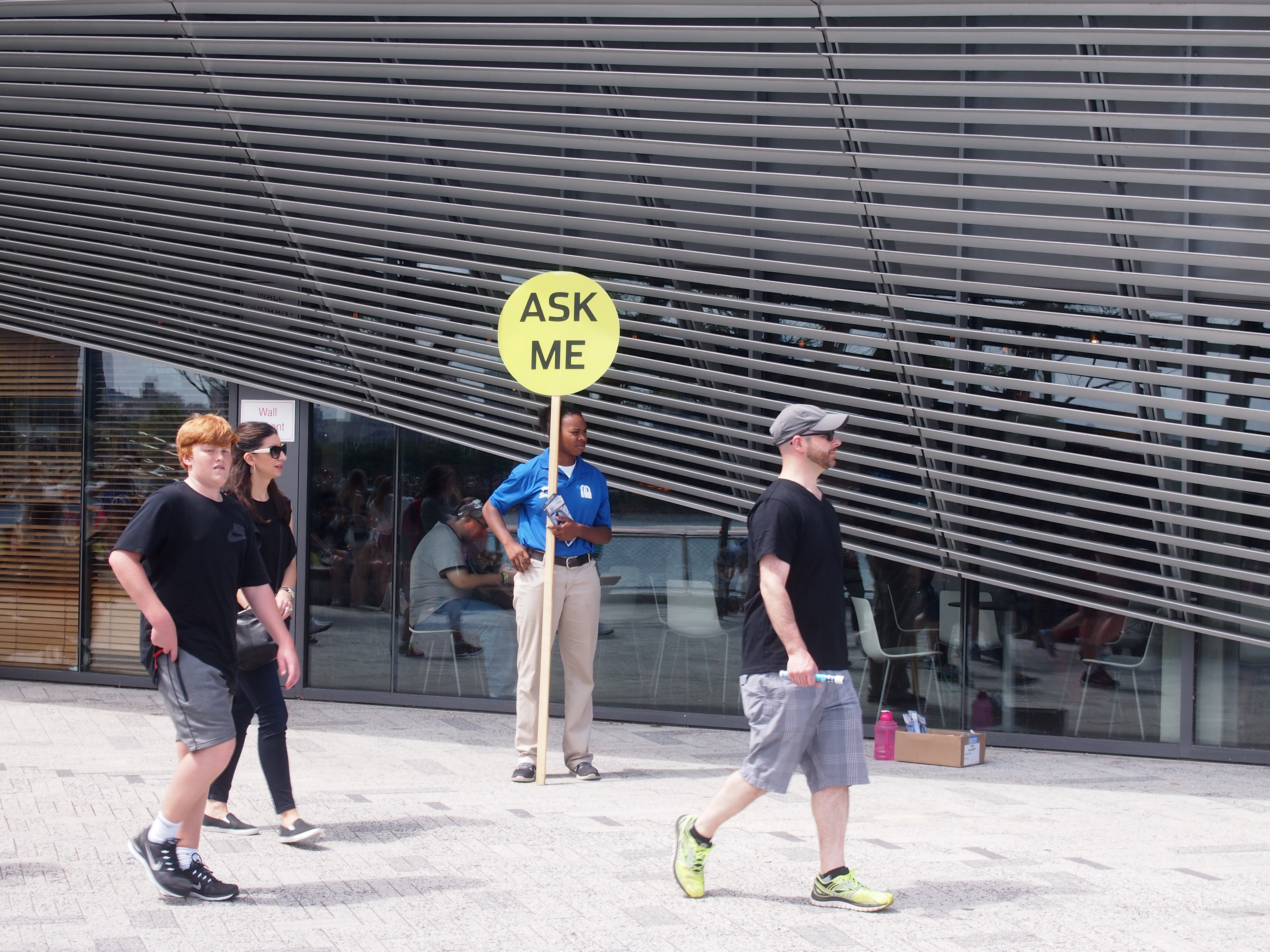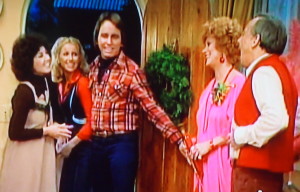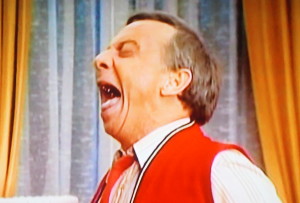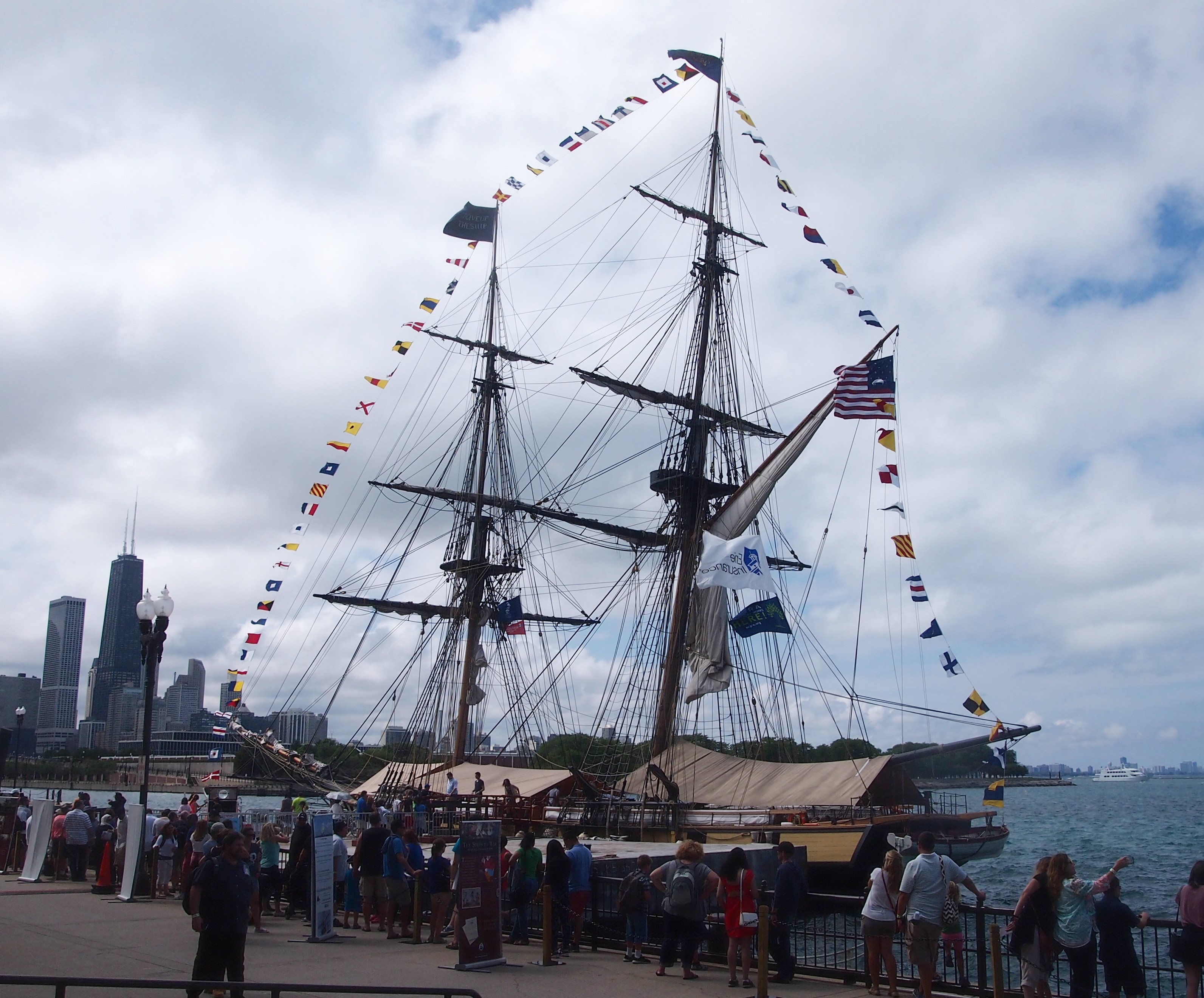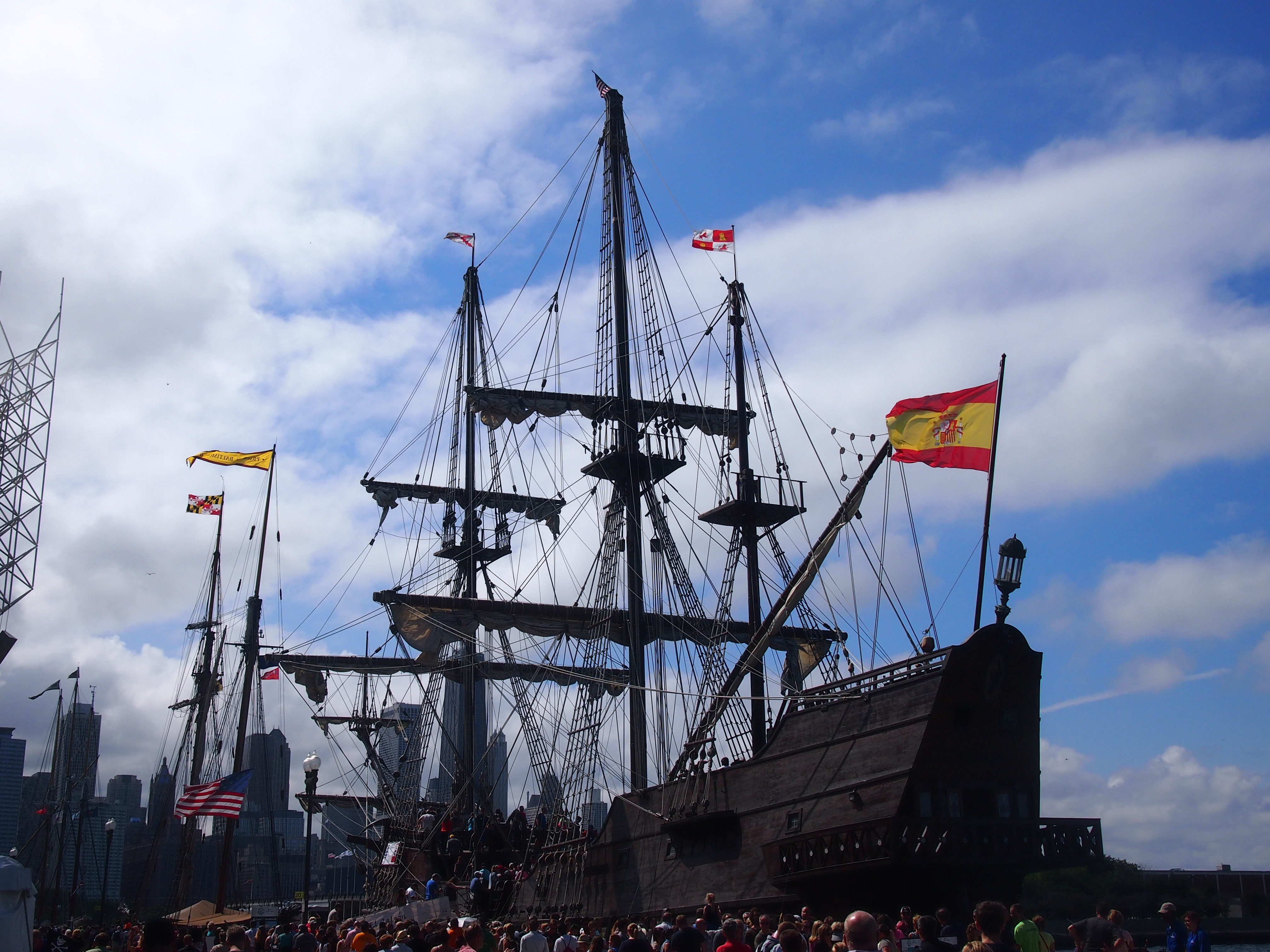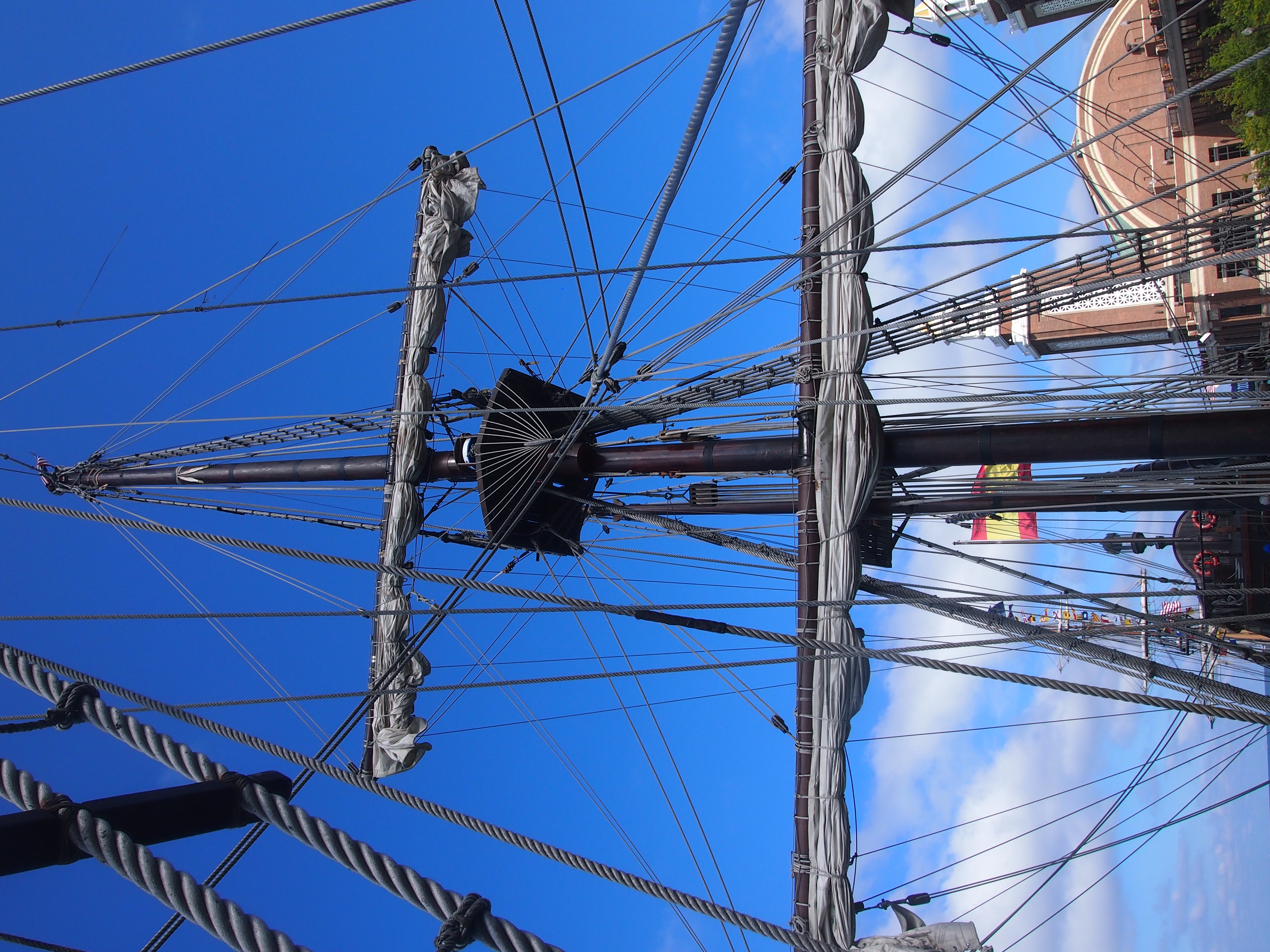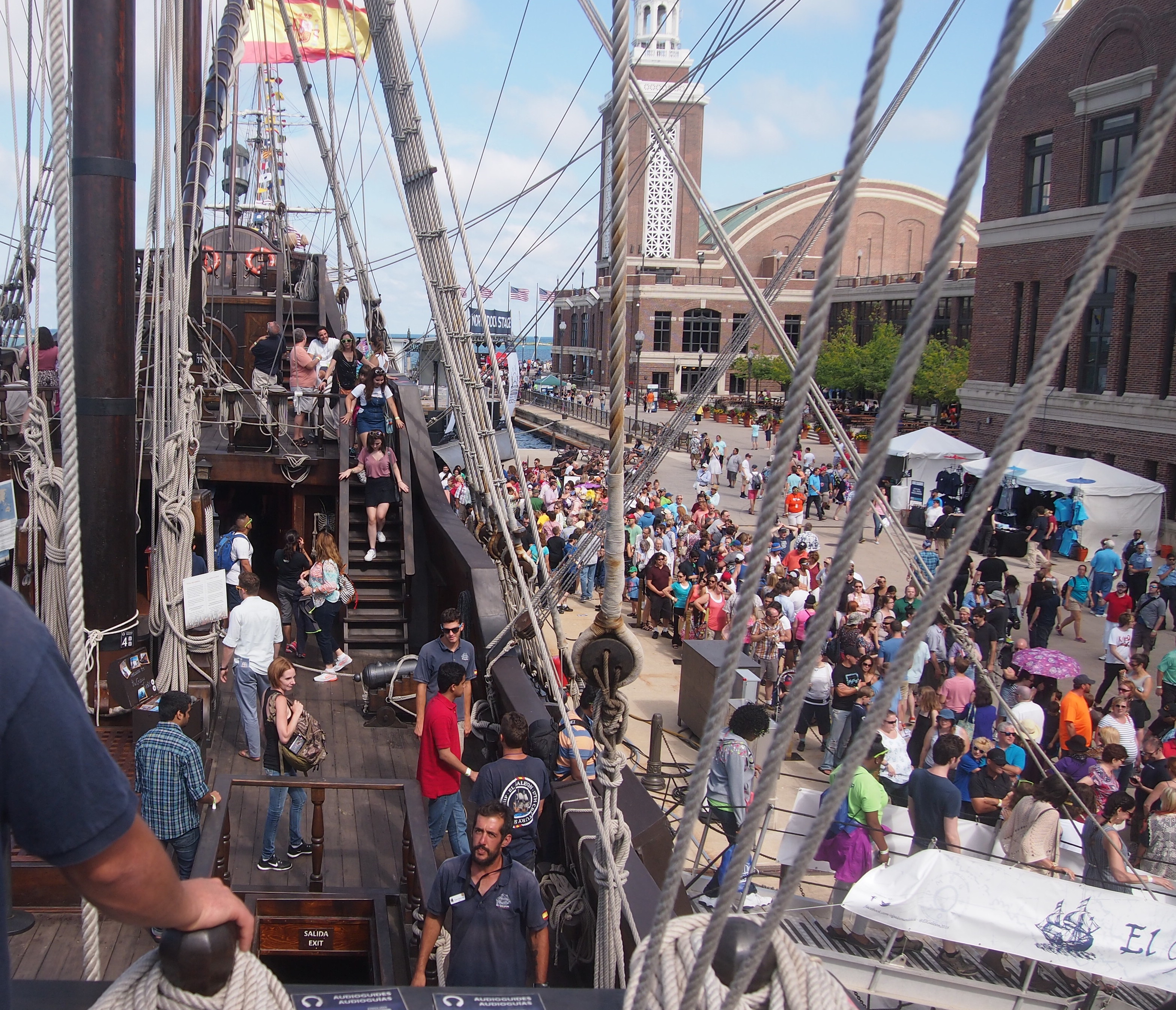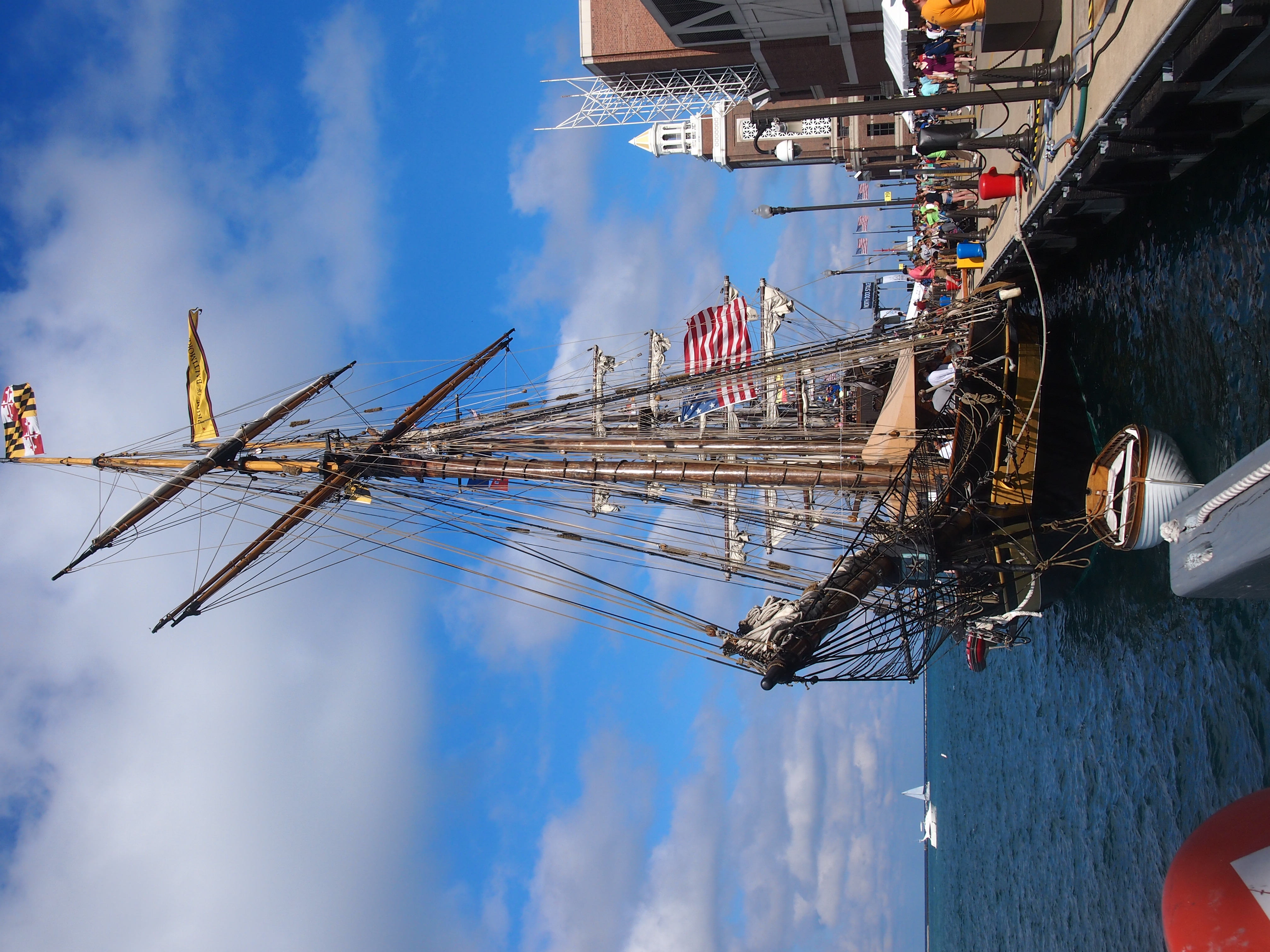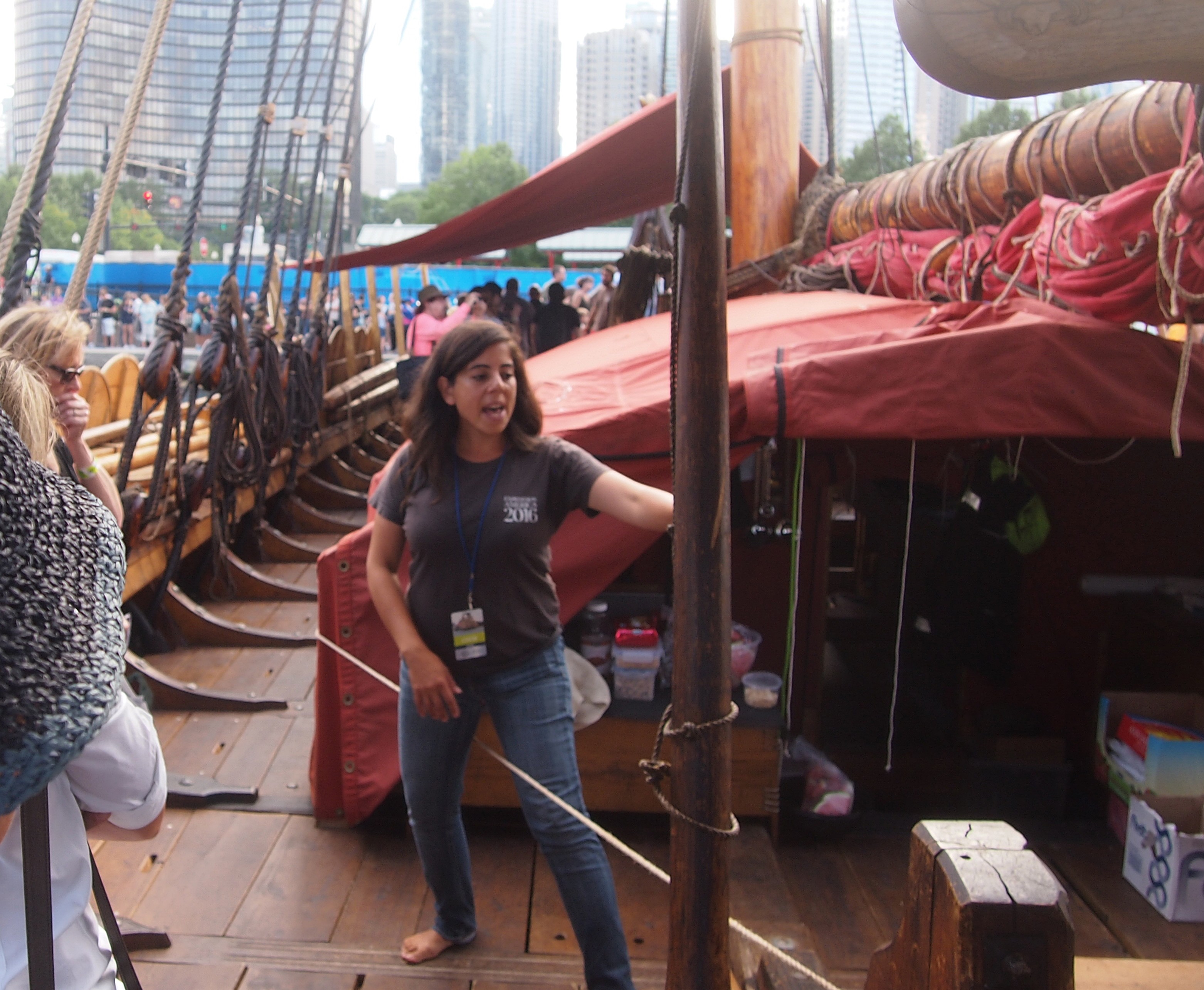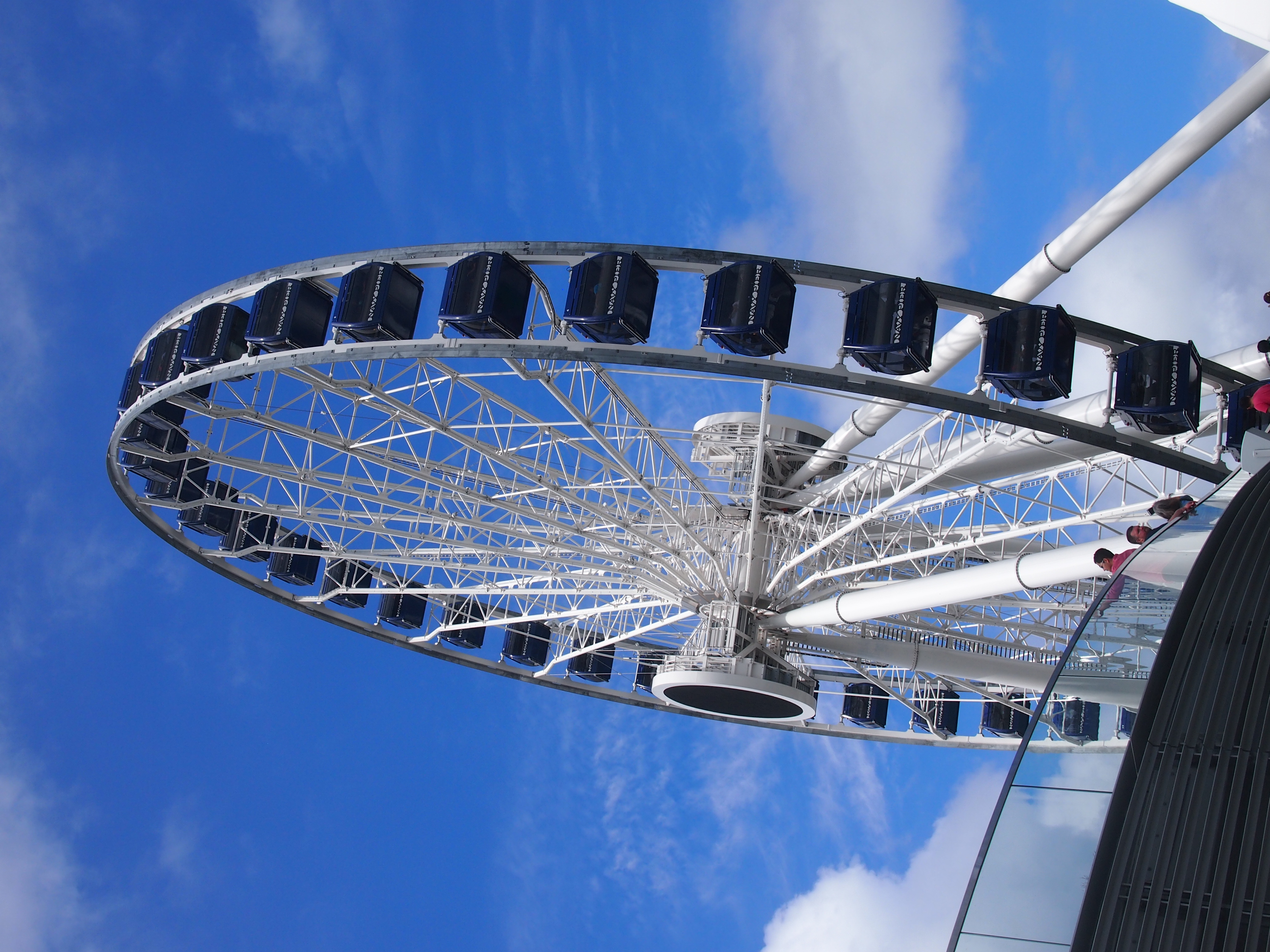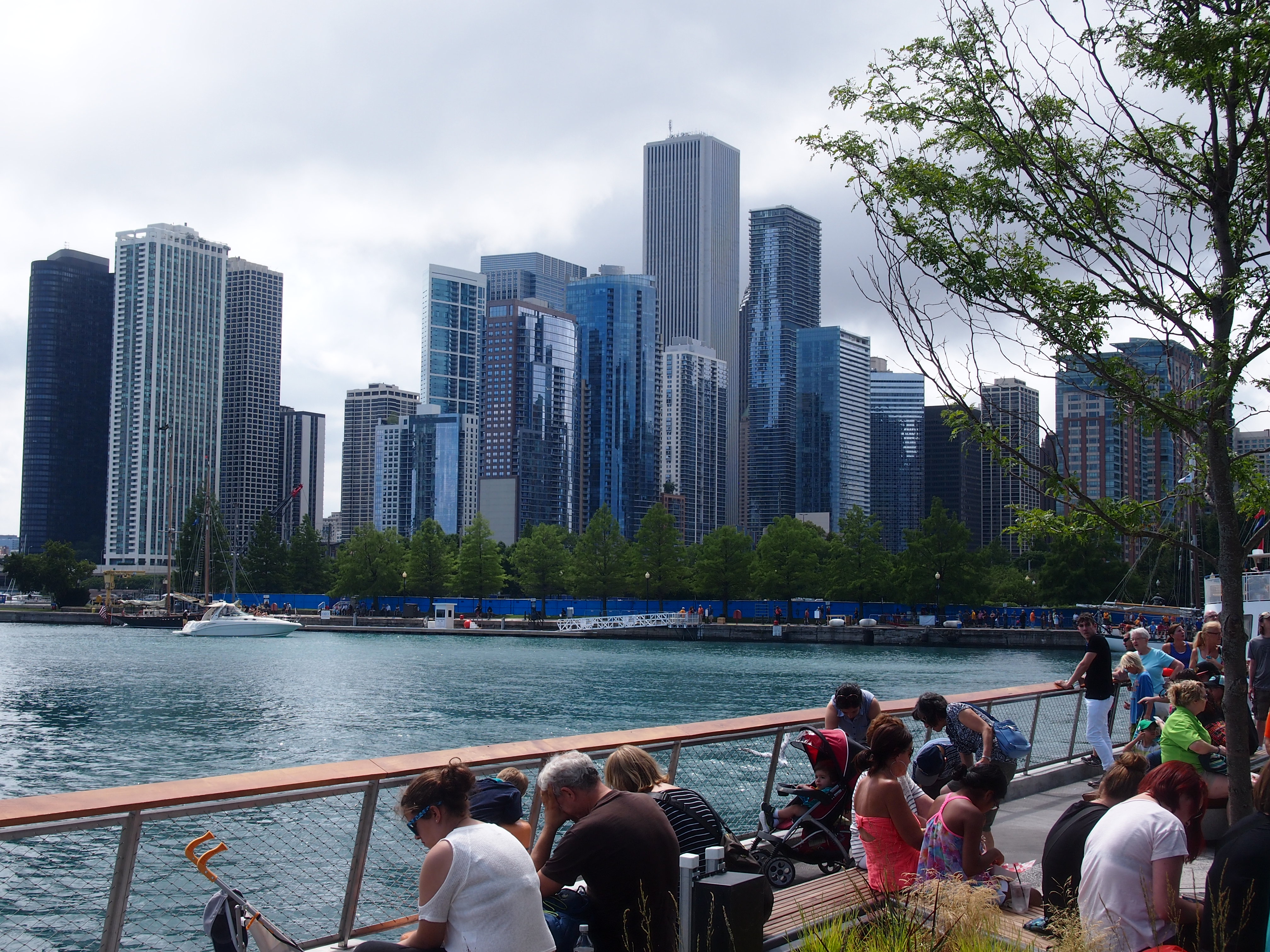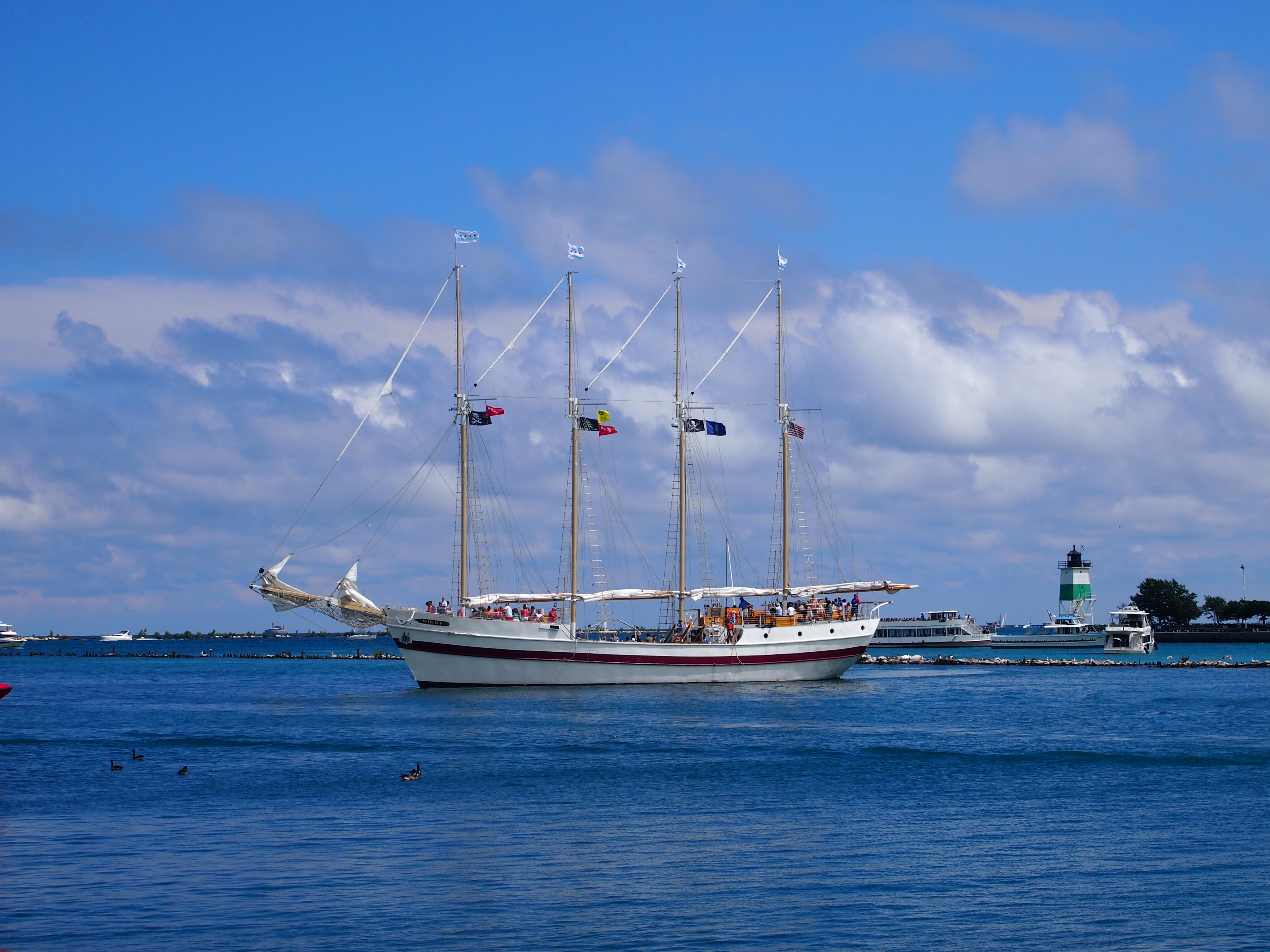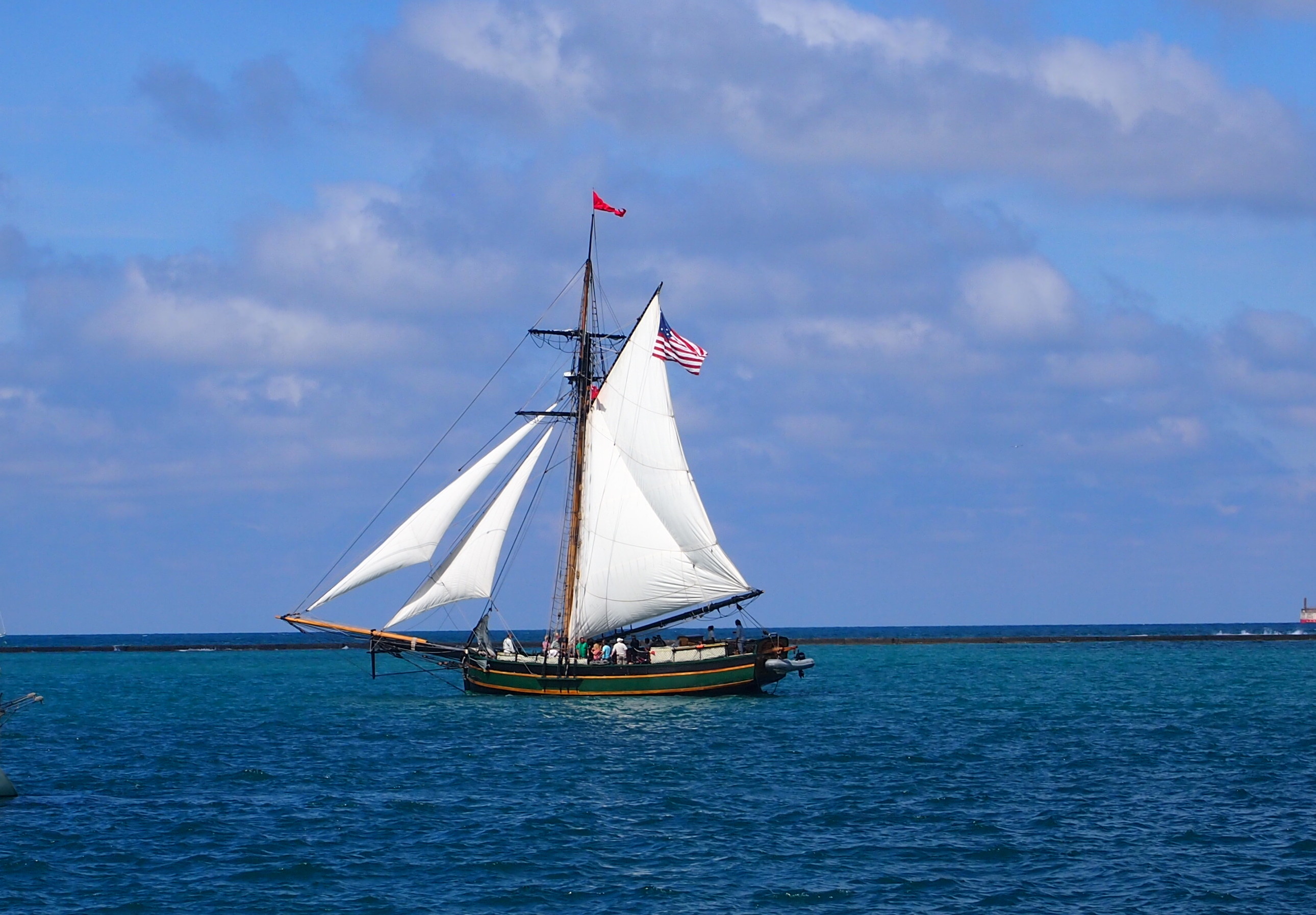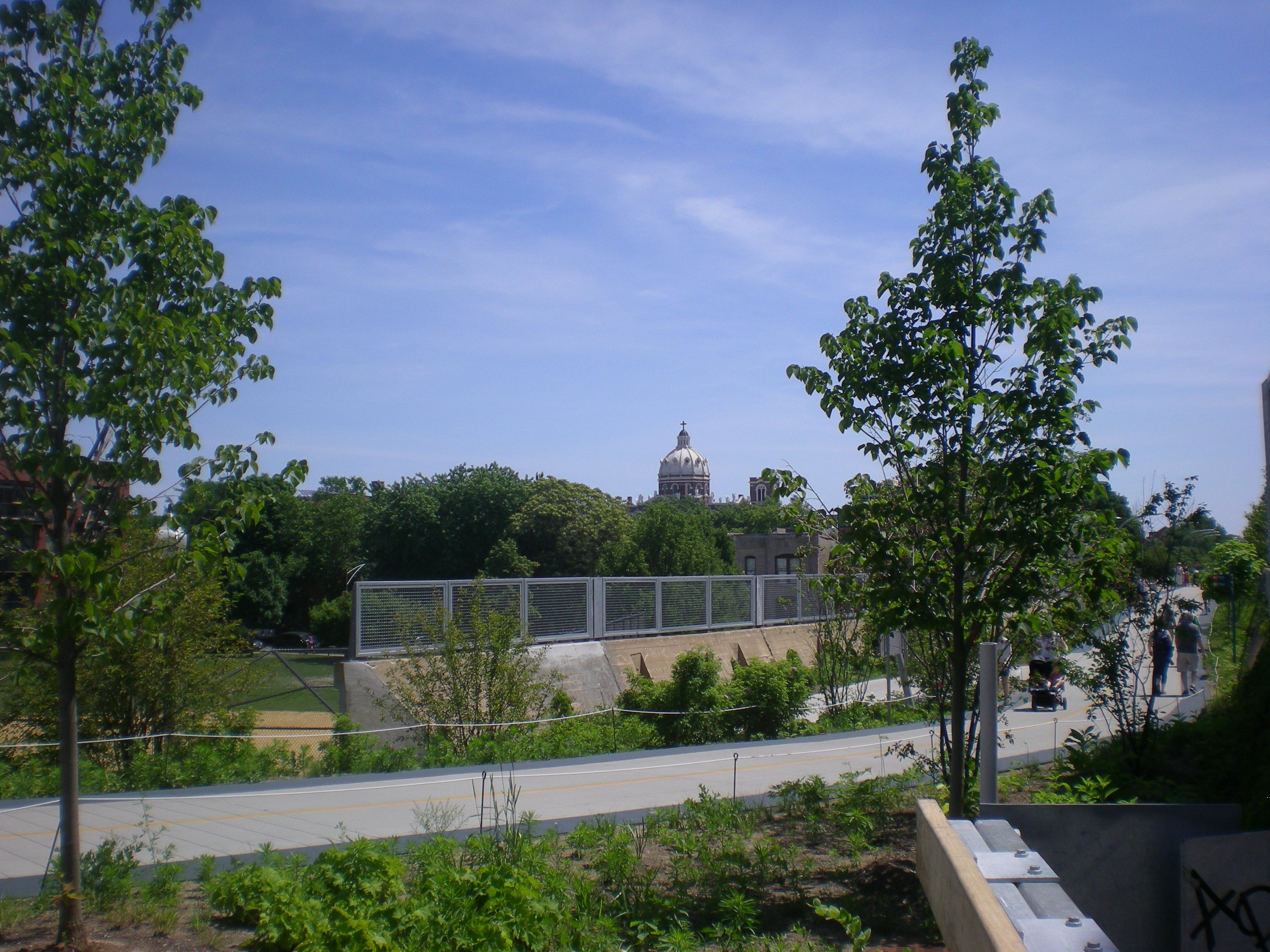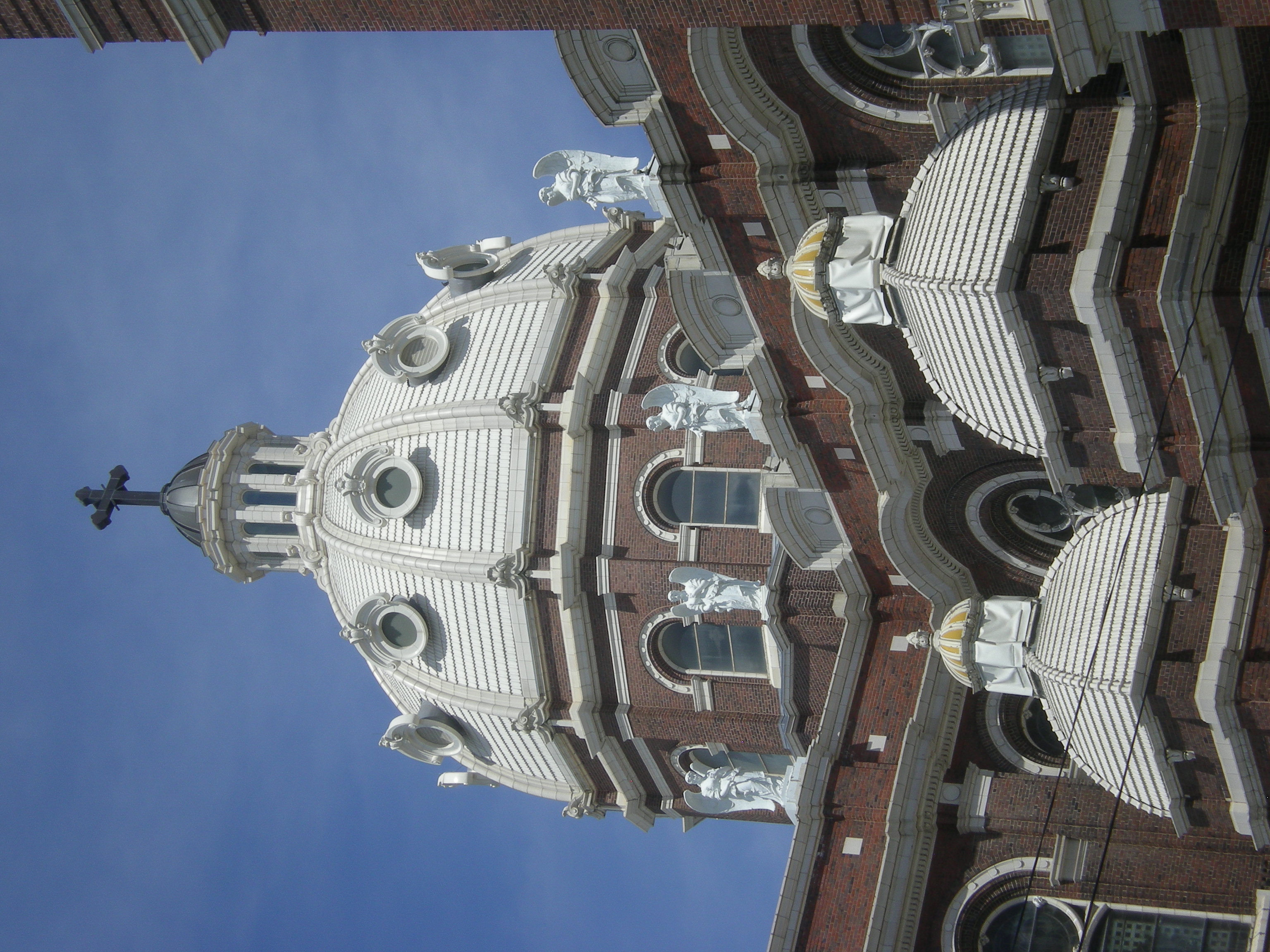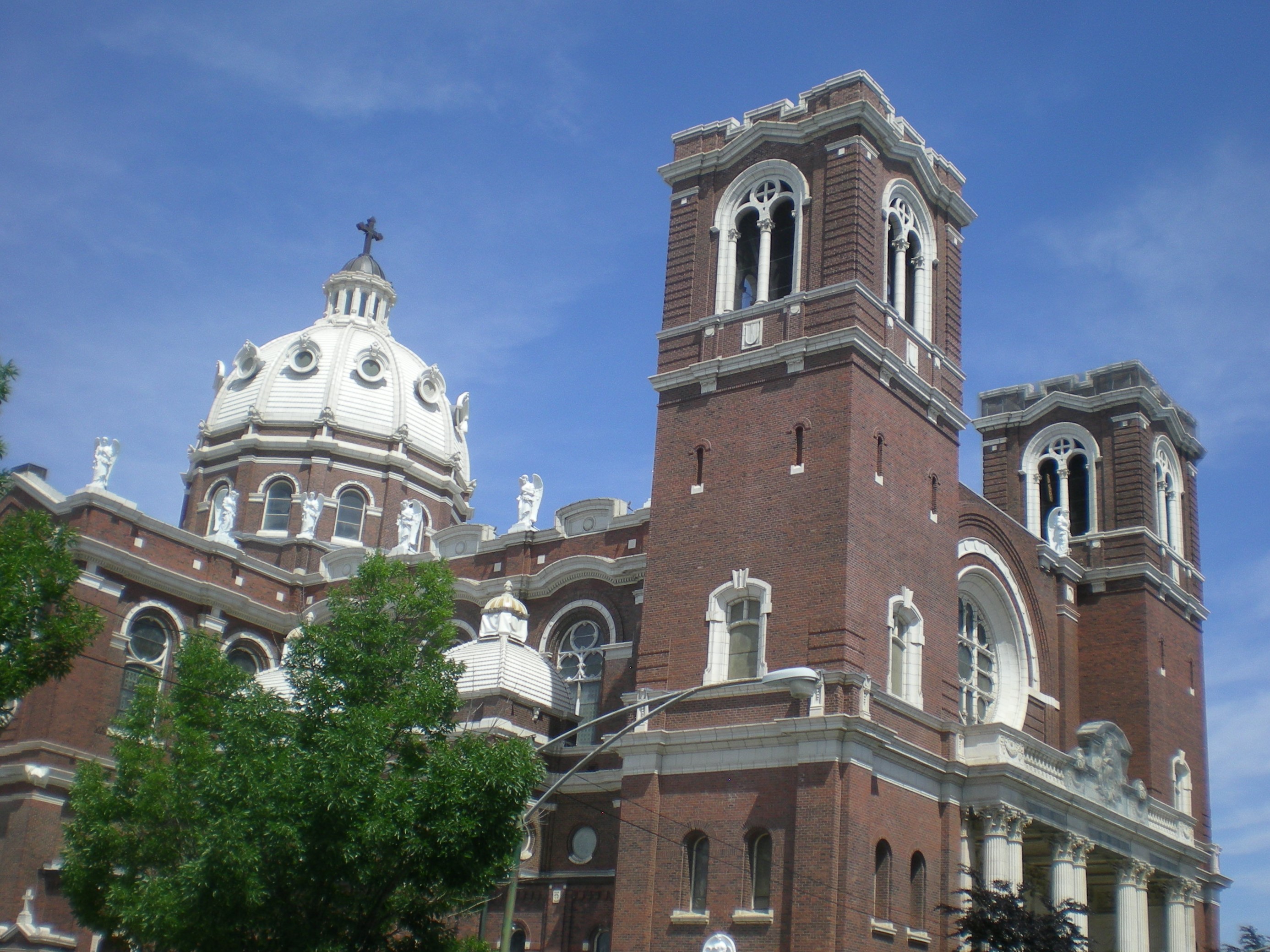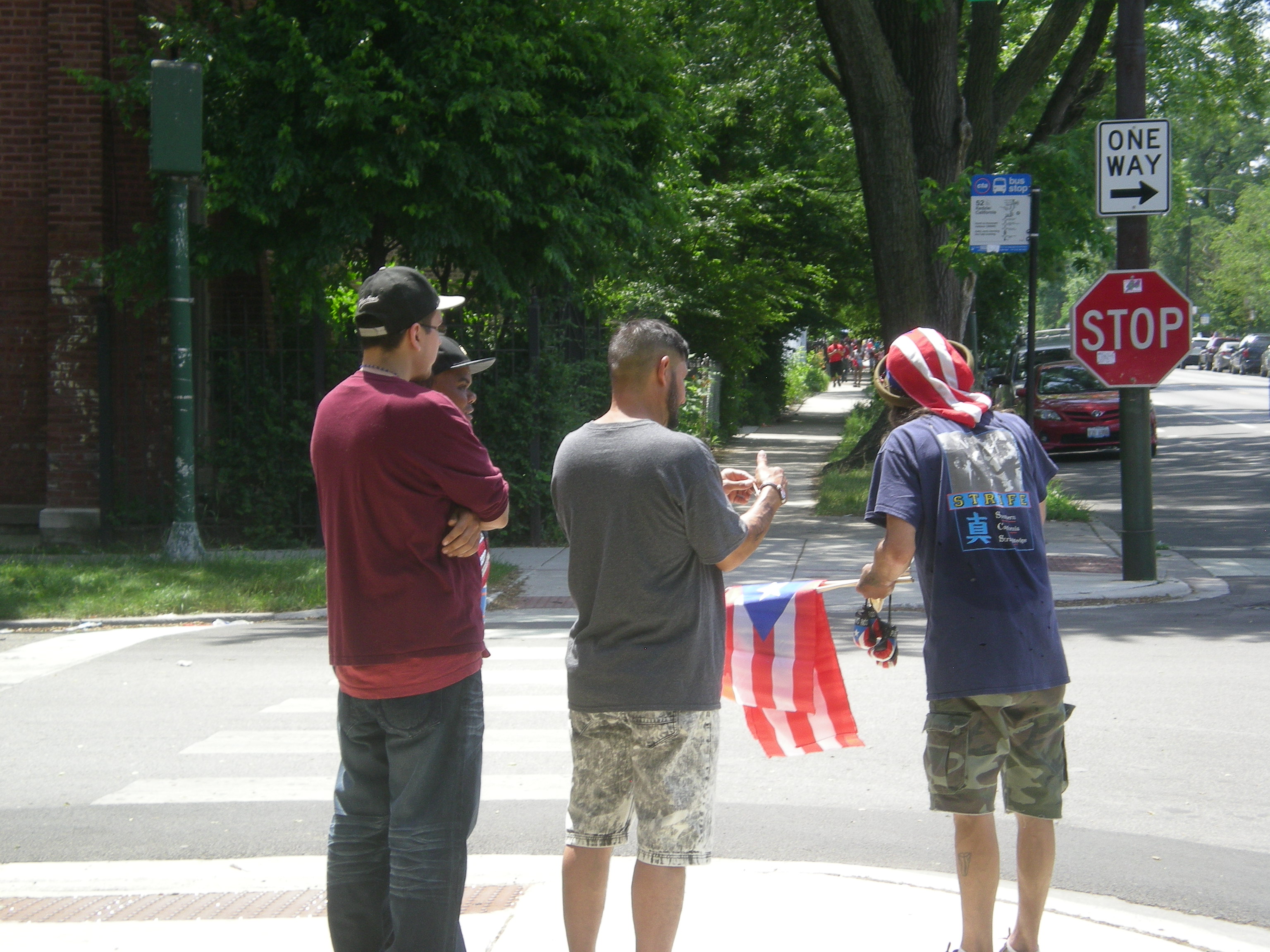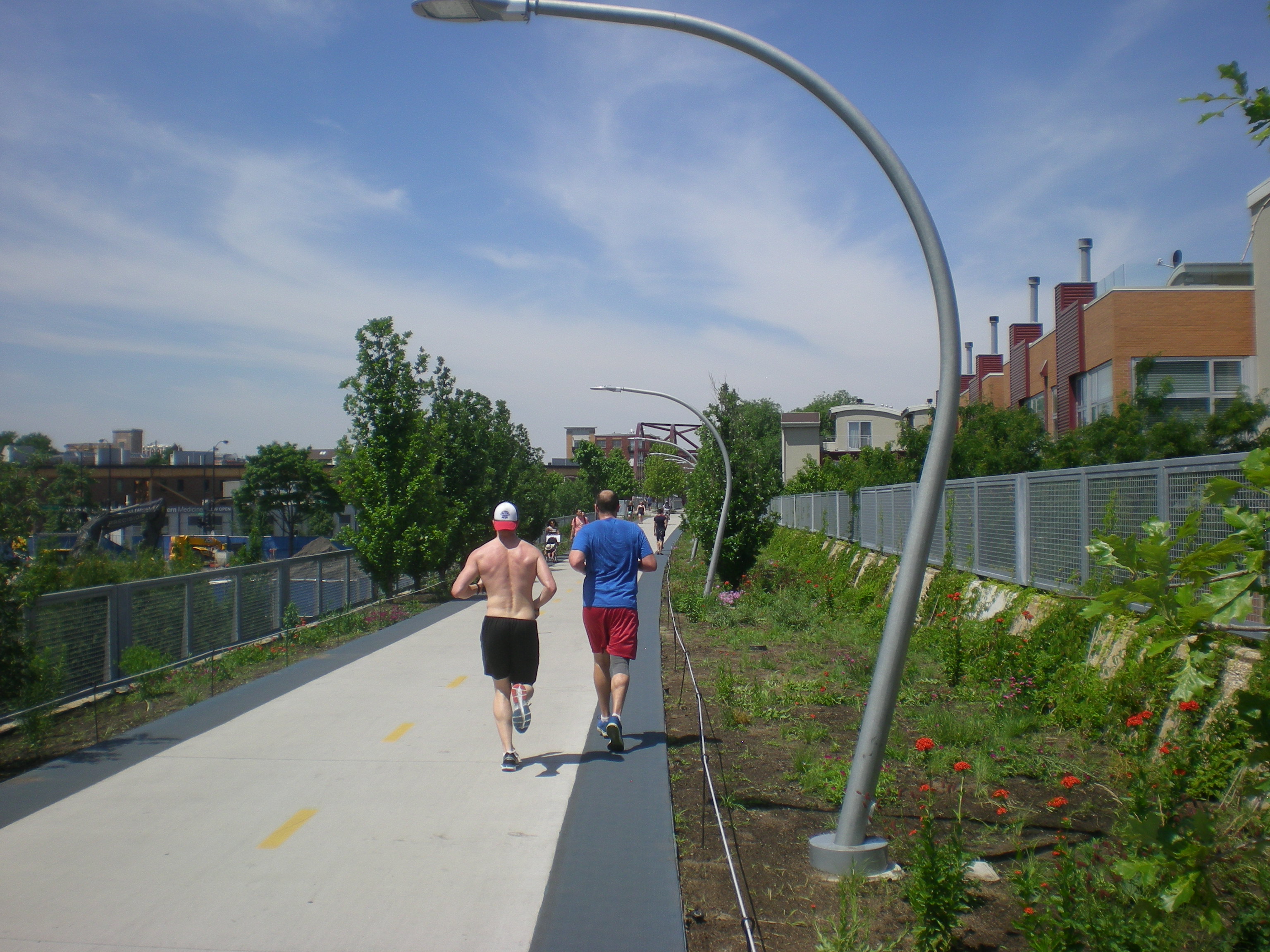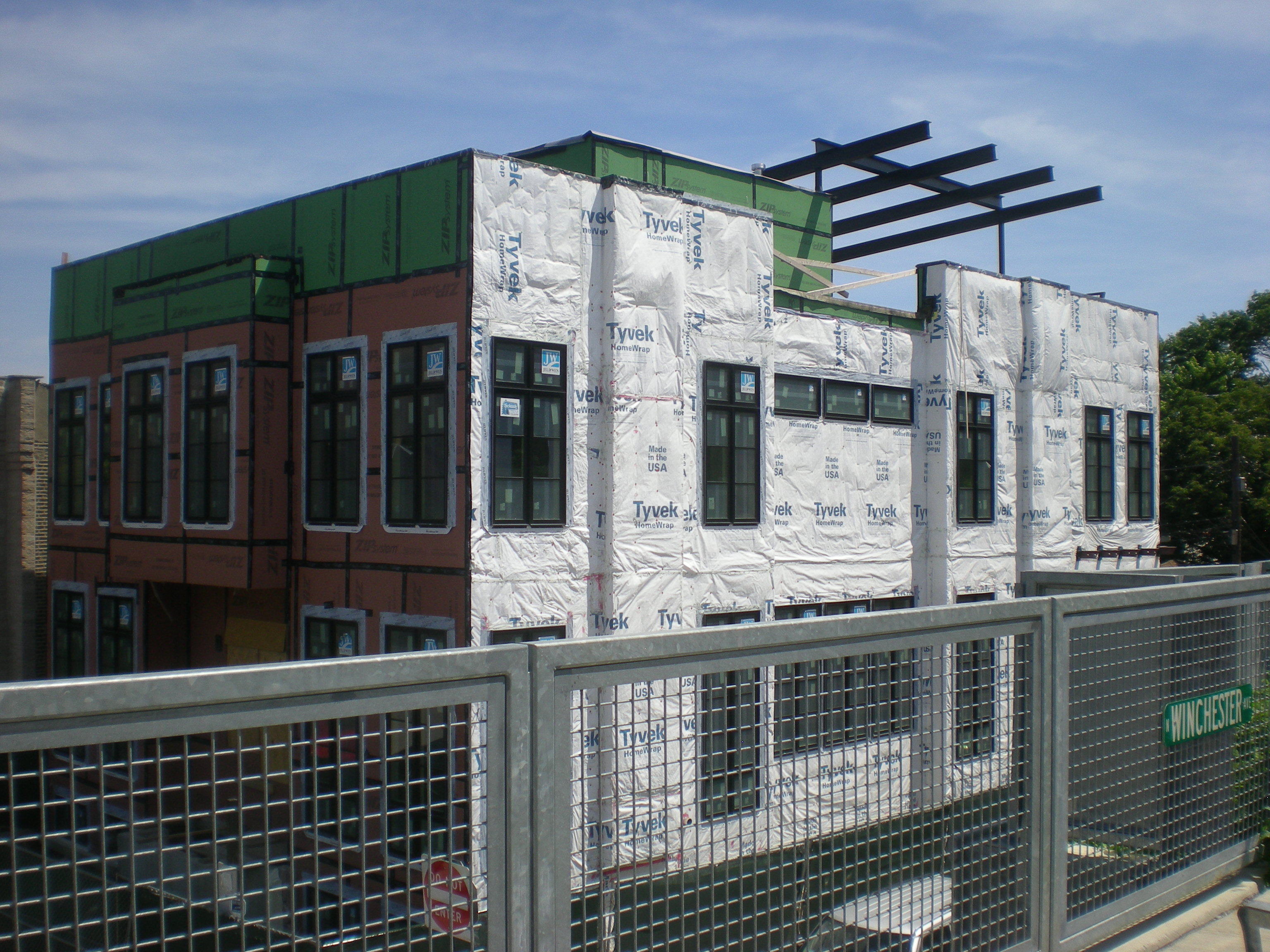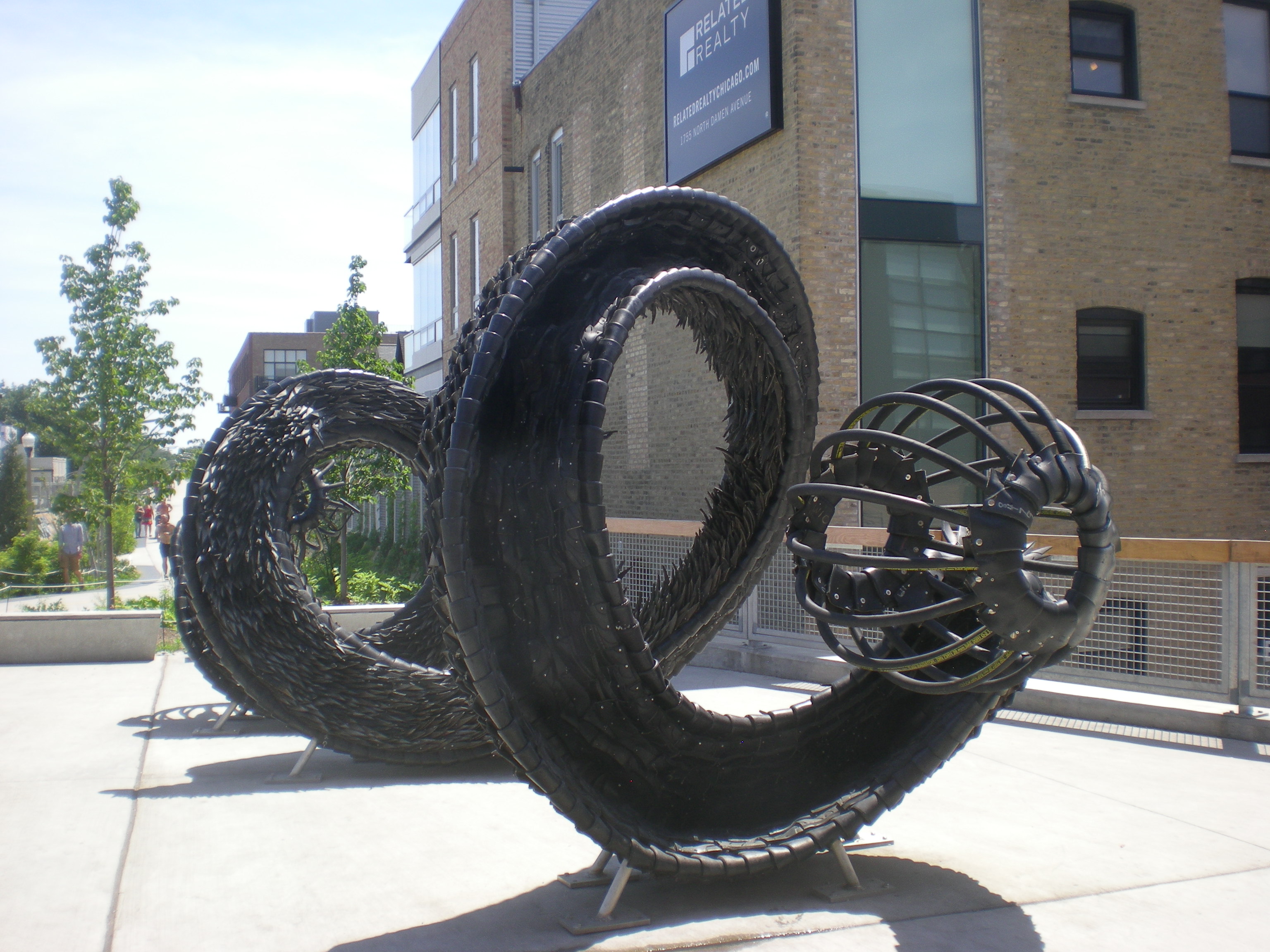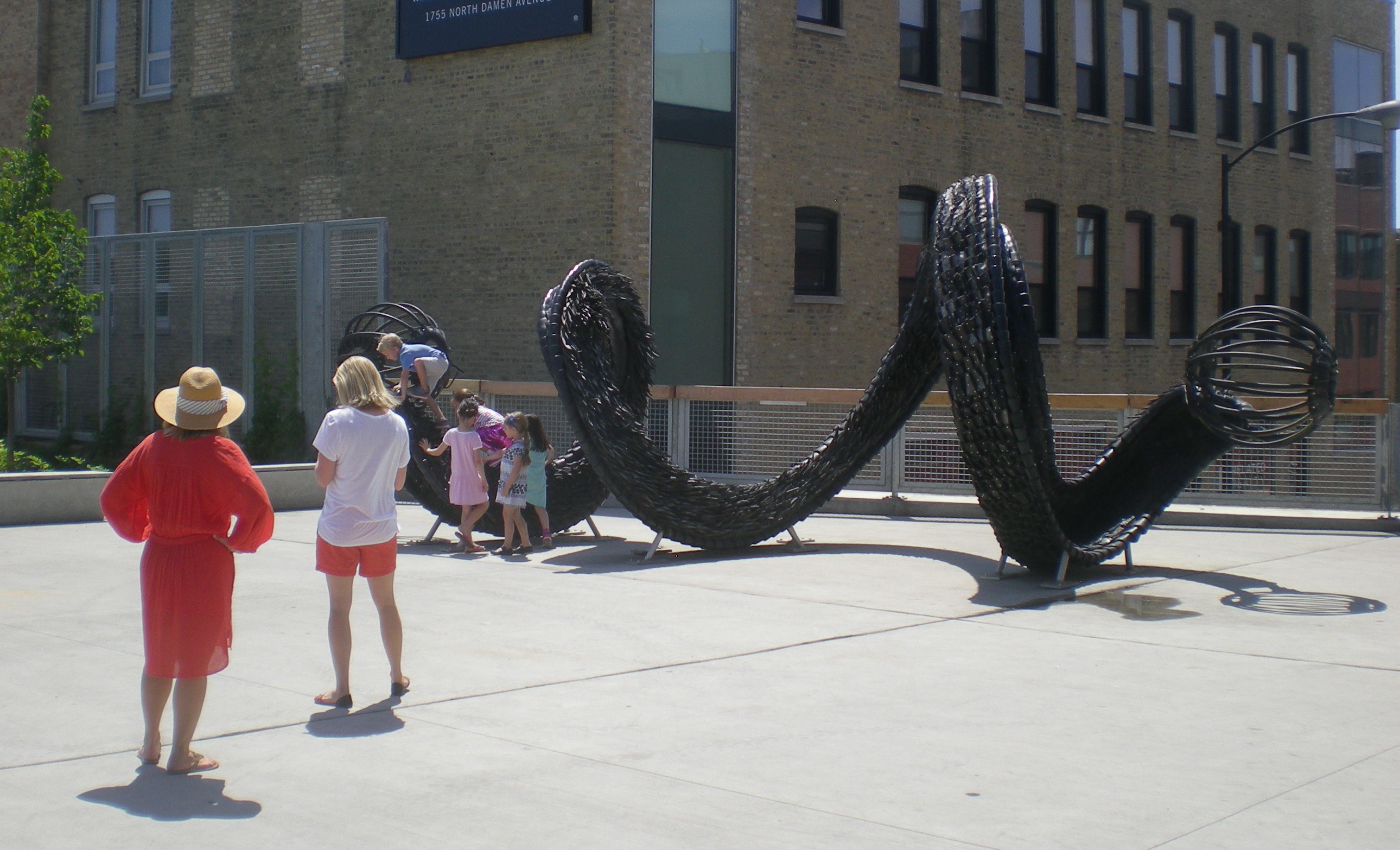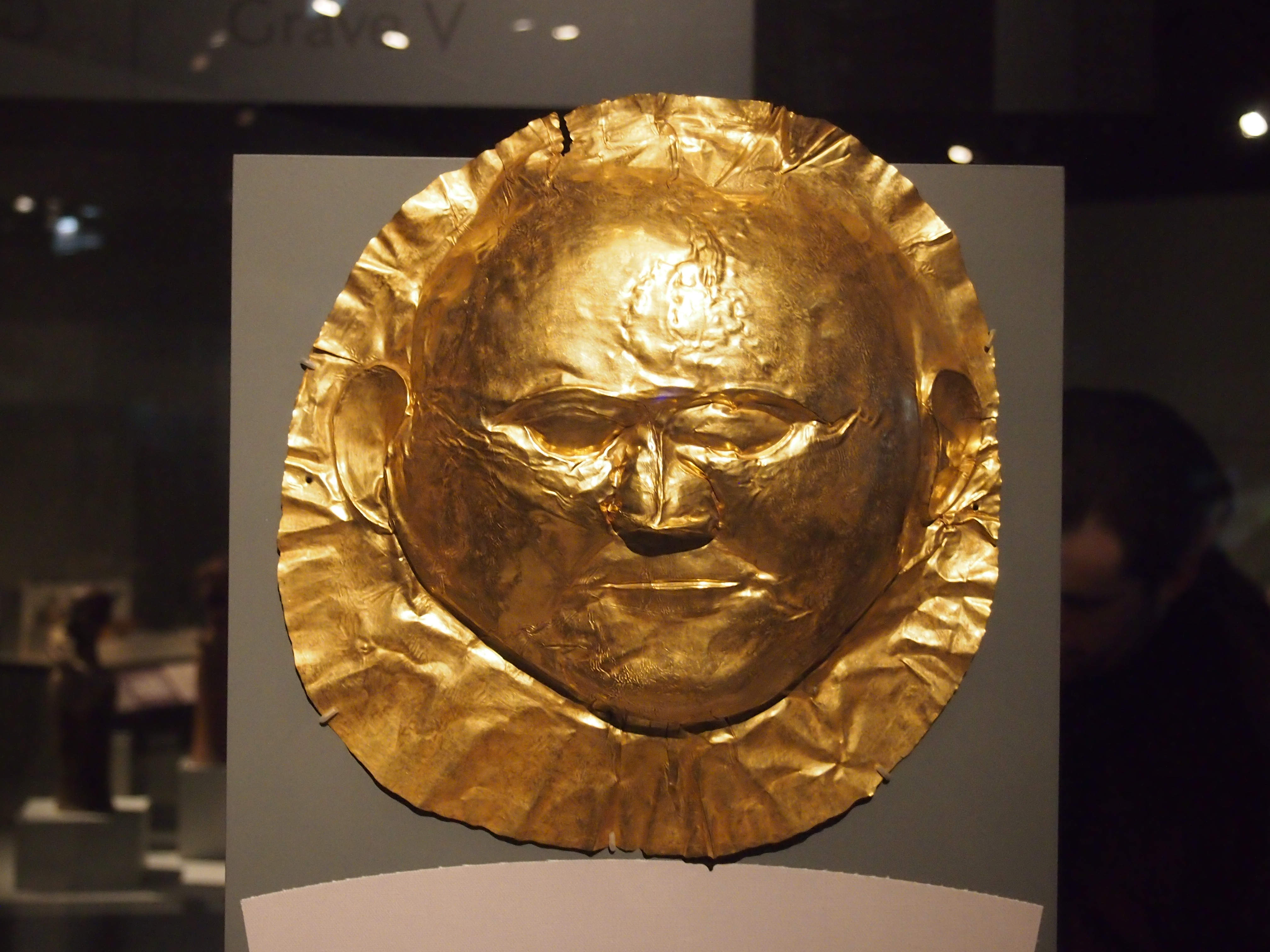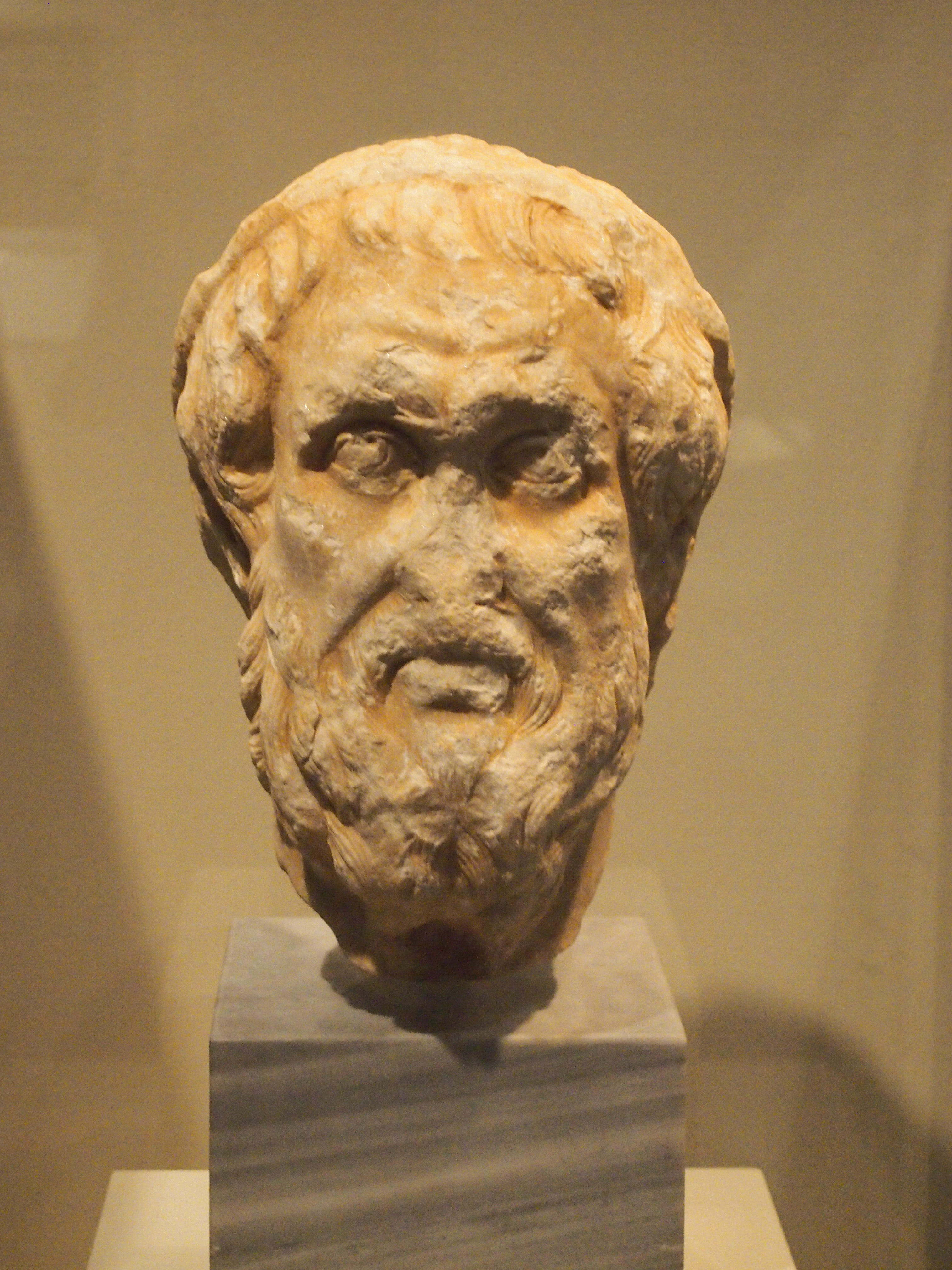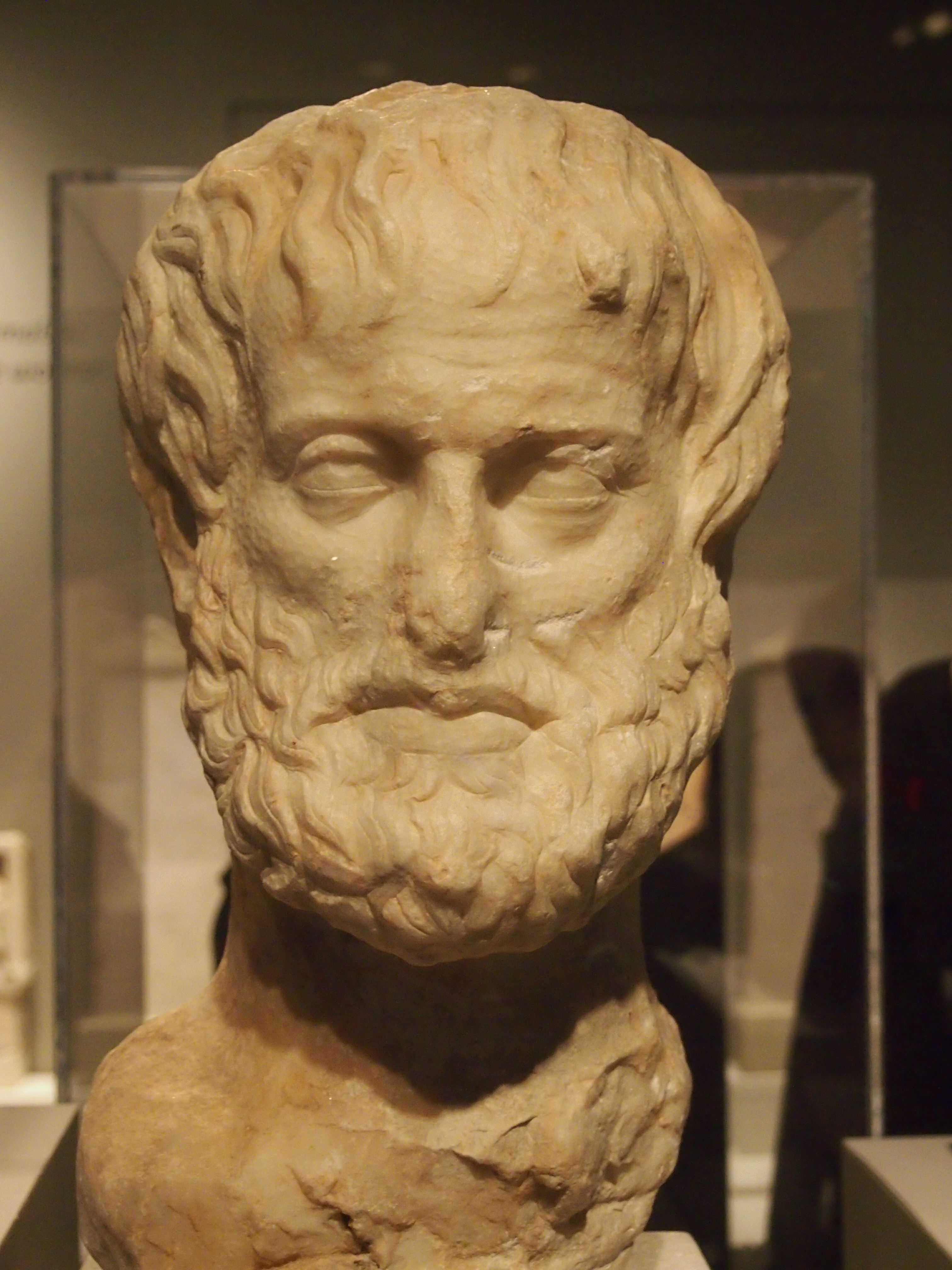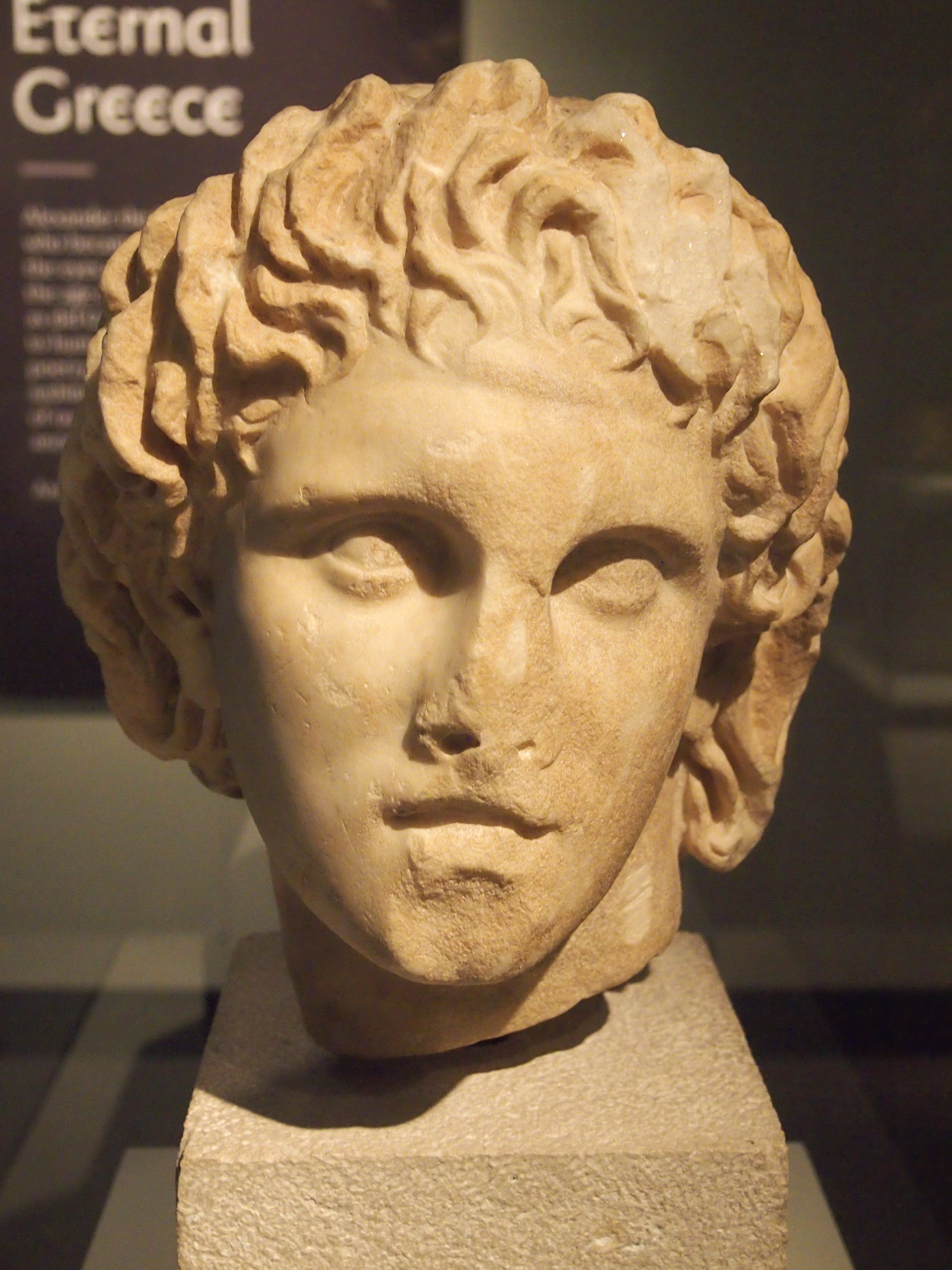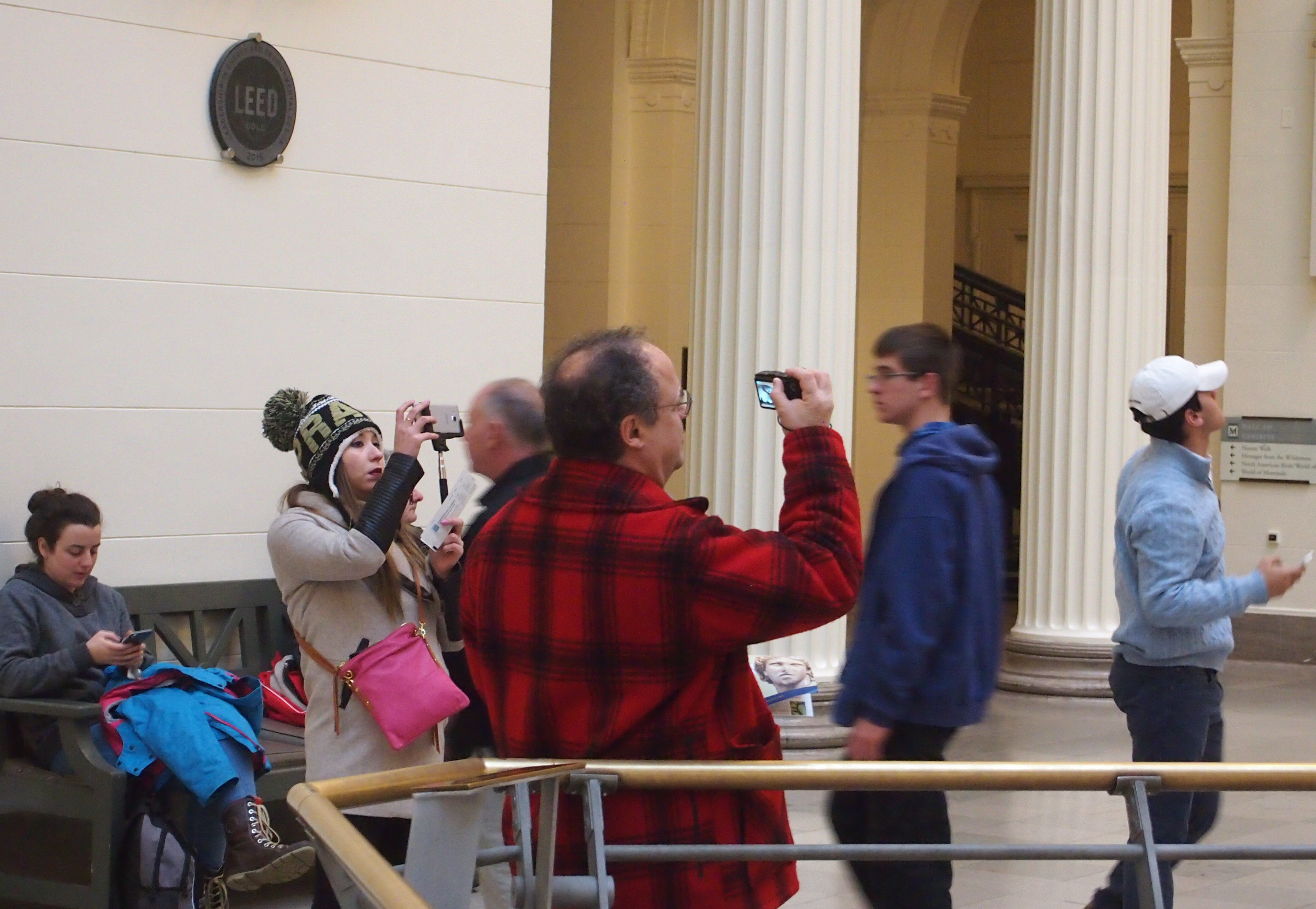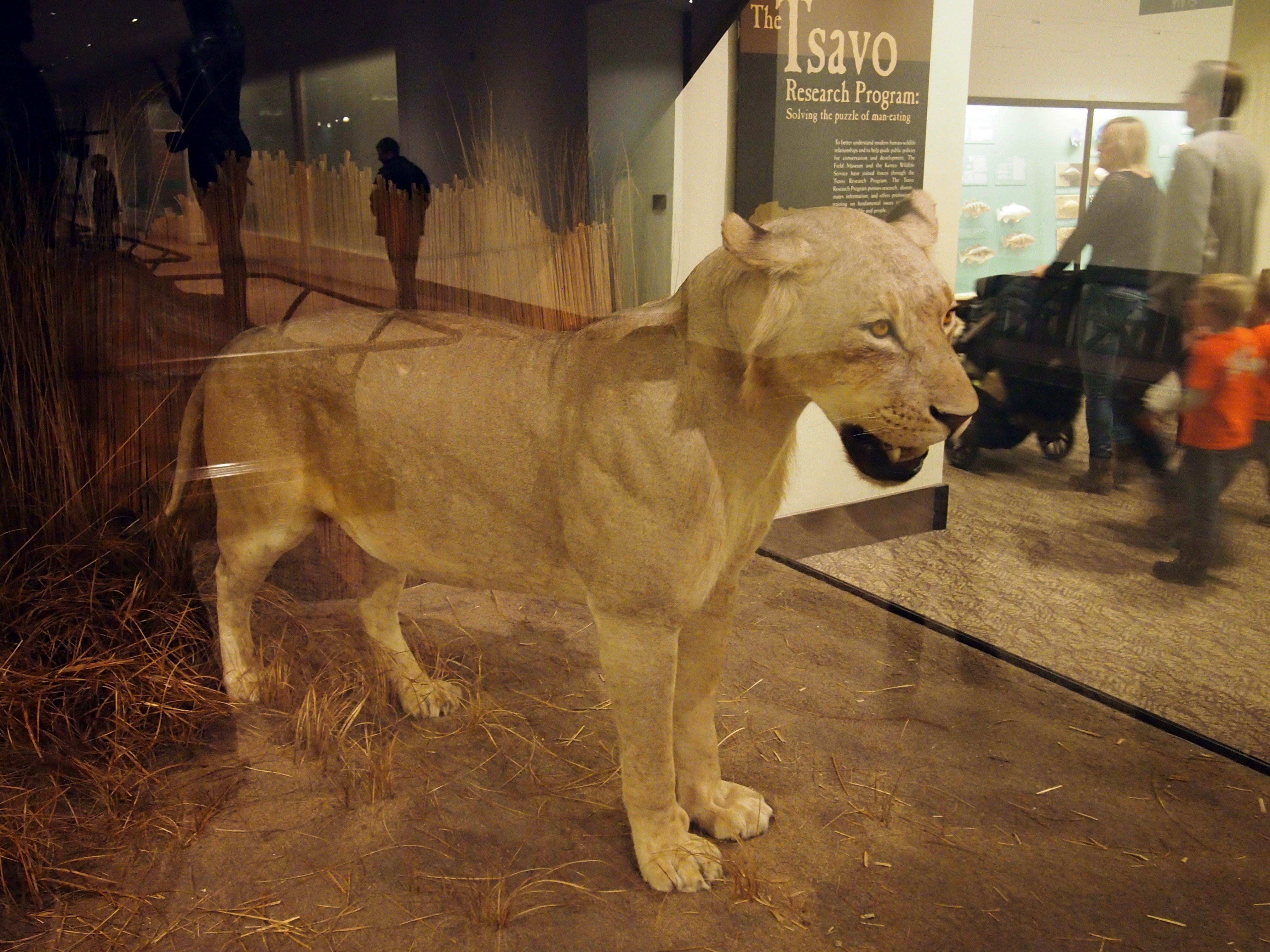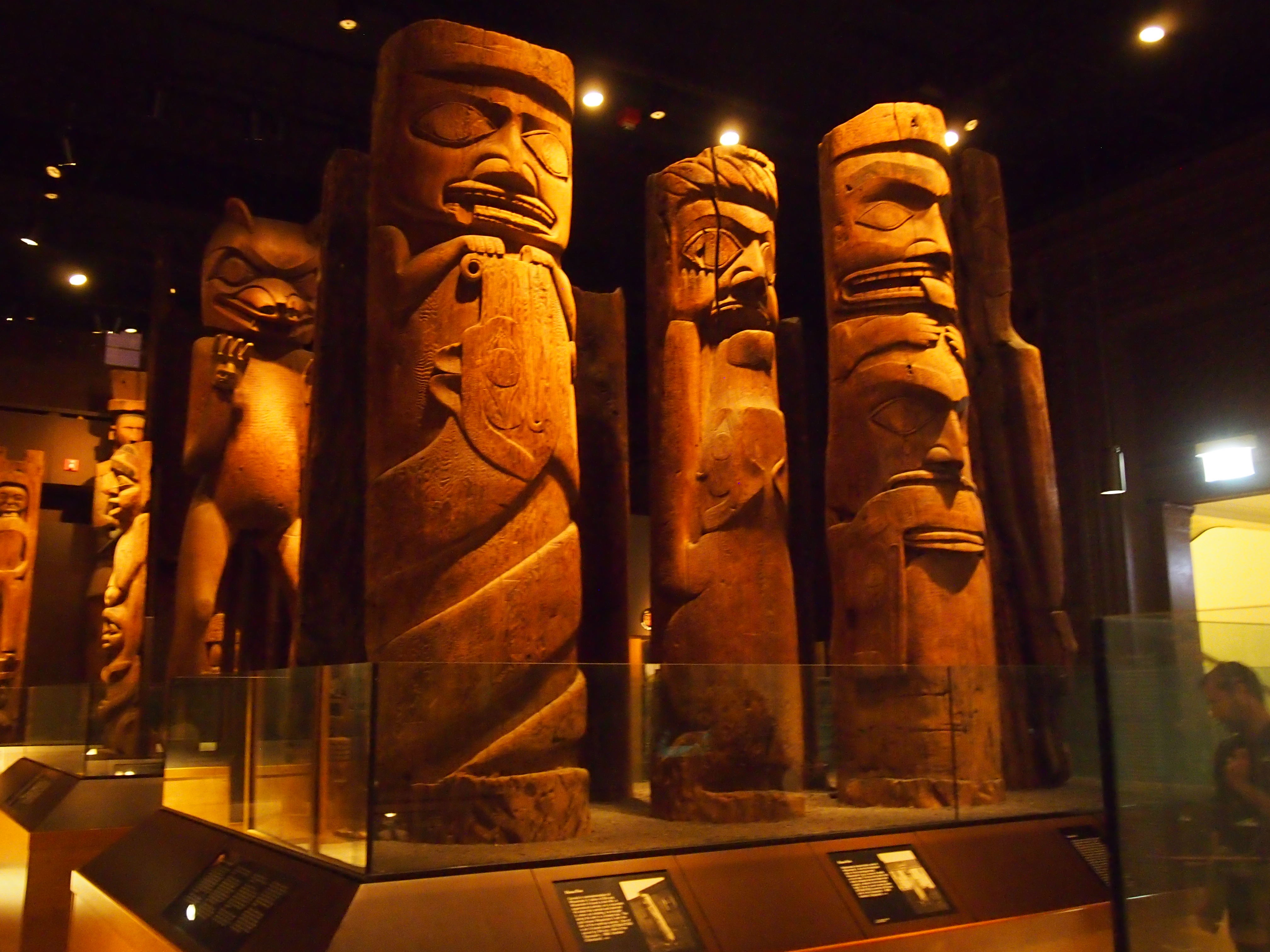Where in the Chicago area is this fellow?
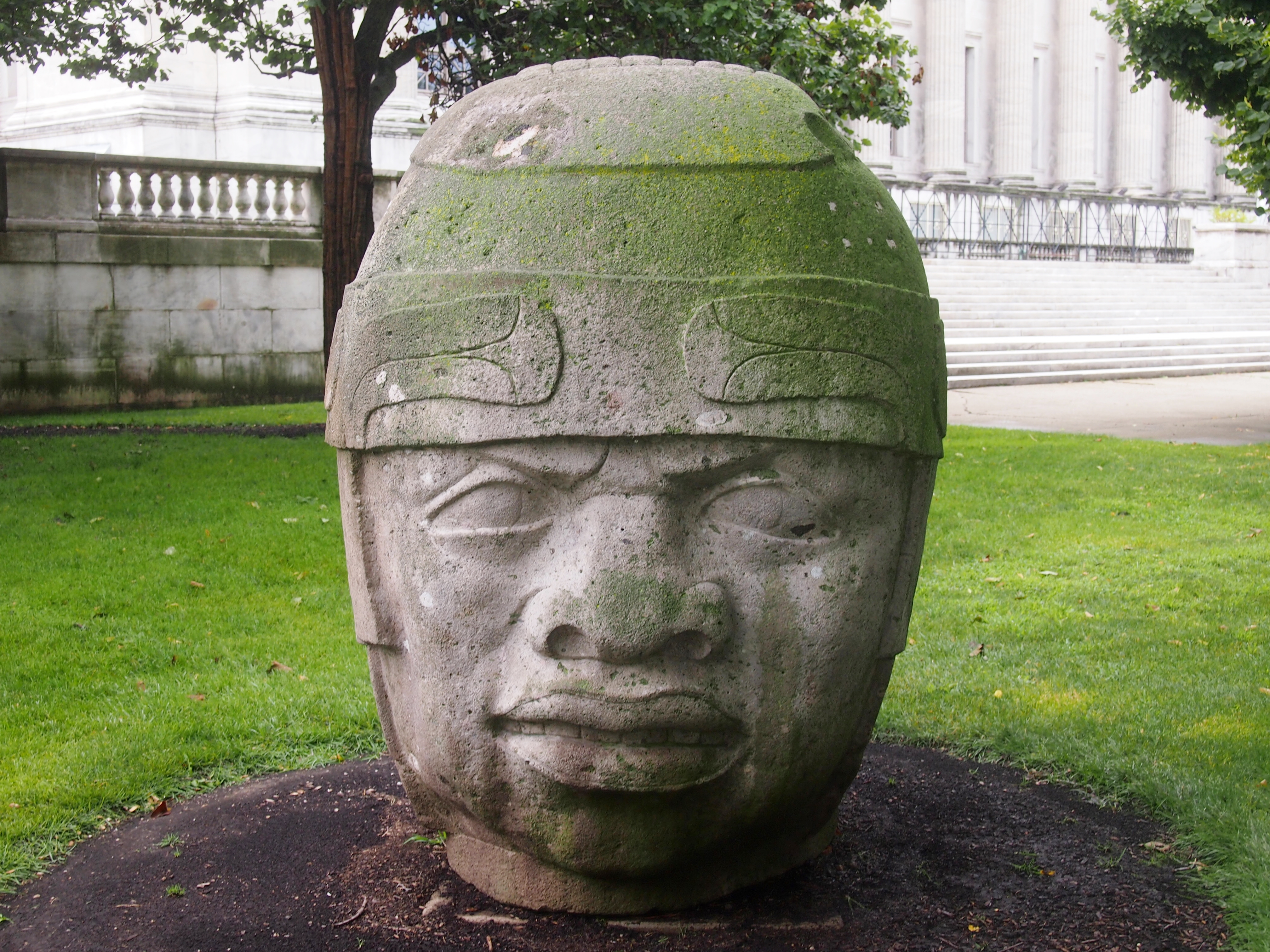 Between the Field Museum and the Shedd Aquarium in downtown Chicago, that’s where, with the Field Museum in the background of the picture. It’s a replica by Ignacio Perez Solano of Olmec Head 8, and a gift of the state of Veracruz to Chicago, dedicated in 2003. So while near the Field Museum, it’s actually part of the city’s collection of outdoor art. It might not be as imposing as the original, but it’s no small thing at seven feet high and a weight of seven tons.
Between the Field Museum and the Shedd Aquarium in downtown Chicago, that’s where, with the Field Museum in the background of the picture. It’s a replica by Ignacio Perez Solano of Olmec Head 8, and a gift of the state of Veracruz to Chicago, dedicated in 2003. So while near the Field Museum, it’s actually part of the city’s collection of outdoor art. It might not be as imposing as the original, but it’s no small thing at seven feet high and a weight of seven tons.
Later it occurred to me that I didn’t know much about the original Olmec heads, beyond their great antiquity in pre-Columbian Mexico, so I read a bit. “Seventeen heads have been discovered to date, 10 of which are from San Lorenzo and 4 from La Venta, two of the most important Olmec centres,” the Ancient History Encyclopedia tells me. “The heads were each carved from a single basalt boulder which in some cases were transported 100 km or more to their final destination, presumably using huge balsa river rafts wherever possible and log rollers on land….
“The heads were sculpted using hard hand-held stones and it is likely that they were originally painted using bright colours. The fact that these giant sculptures depict only the head may be explained by the widely held belief in Mesoamerican culture that it was the head alone which contained the emotions, experience, and soul of an individual.”
Apparently the state of Veracruz, especially when Miguel Alemán Velasco was governor (1998-2004), decided that norteamericanos would benefit from replica Olmec heads, so there are now eight such heads in the U.S., according to Wiki: Austin, Chicago, Covina, Calif., McAllen, Tex., New York, San Francisco, Washington, DC, and West Valley City, Utah.
Closer to the Shedd is a very different sort of sculpture, the aptly named “Man With Fish.”
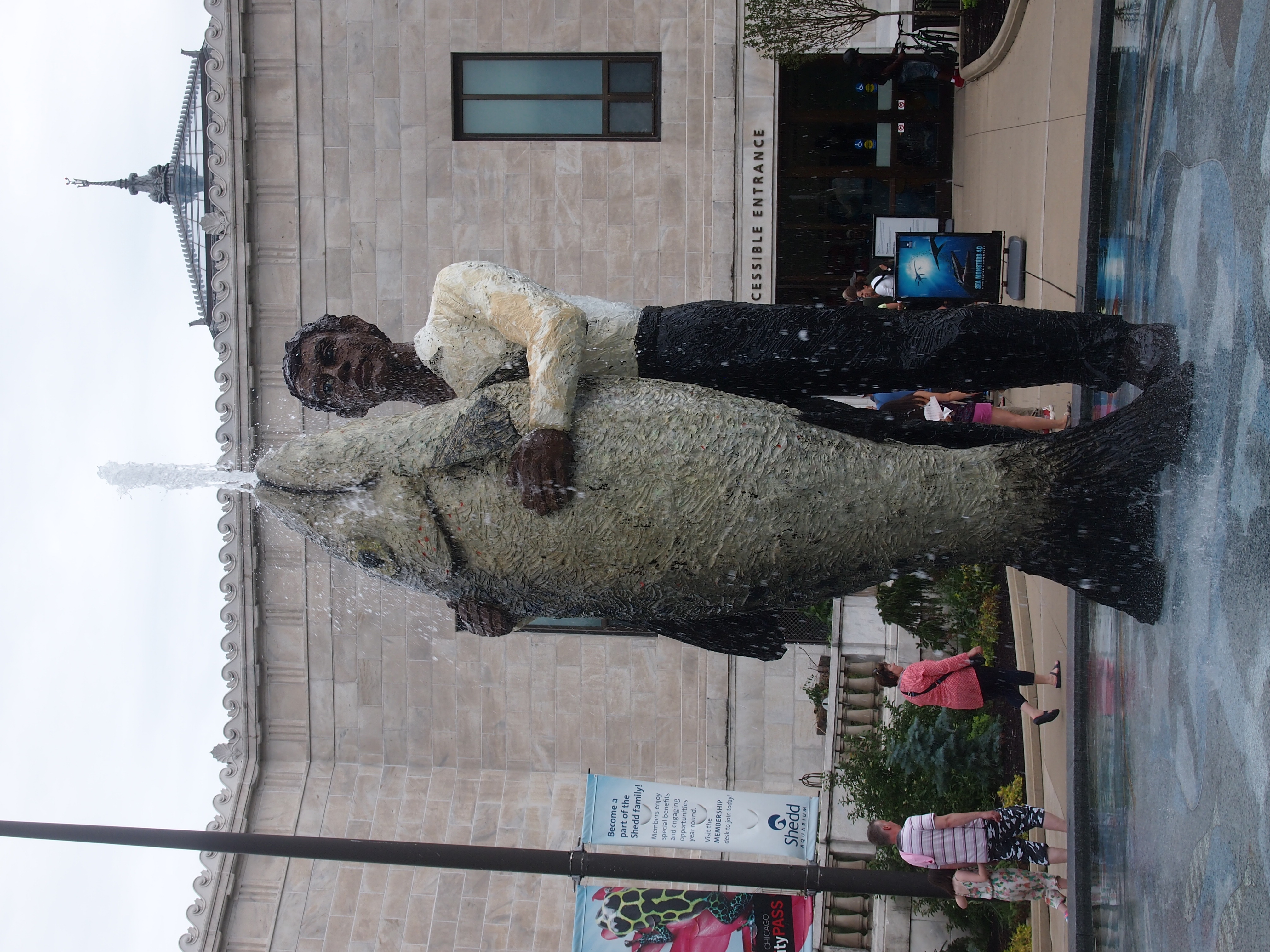 According to the Chicago Park District, the work is “a gift to the Shedd Aquarium from William N. Sick in honor of his wife, Stephanie… The painted bronze sculpture portrays a man with his arms wrapped around an enormous fish. Water sprays from the fish’s mouth, dripping into a reflecting pool below.”
According to the Chicago Park District, the work is “a gift to the Shedd Aquarium from William N. Sick in honor of his wife, Stephanie… The painted bronze sculpture portrays a man with his arms wrapped around an enormous fish. Water sprays from the fish’s mouth, dripping into a reflecting pool below.”
William Sick is a prominent local businessman, and also happens to be a trustee and former chairman of the Shedd Aquarium, and a director of Millennium Park. He must have decided at some point that a sculpture by Stephan Balkenhol was just the thing for the Shedd. It was the artist’s first work in the U.S., installed in 2001.
“Stephan Balkenhol (b. 1957), a German sculptor who studied at the Hamburg School of Fine Arts, created “Man with Fish,” the park district continues. “Several of Balkenhol’s works feature human figures relating to an animal or several animals in an unexpected way. ‘Man with Fish’ conveys this playful approach as does ‘Small Man with Giraffe’ which stands in front of the Hamburg Zoo.”
We didn’t go all the way downtown just to look at statues, as interesting as they were. Lilly goes to university this week, so we all wanted to do something together before that. Ultimately we picked the Shedd Aquarium. We figured it wouldn’t be quite so crowded on Friday as it would be on Saturday, so we went on Friday.
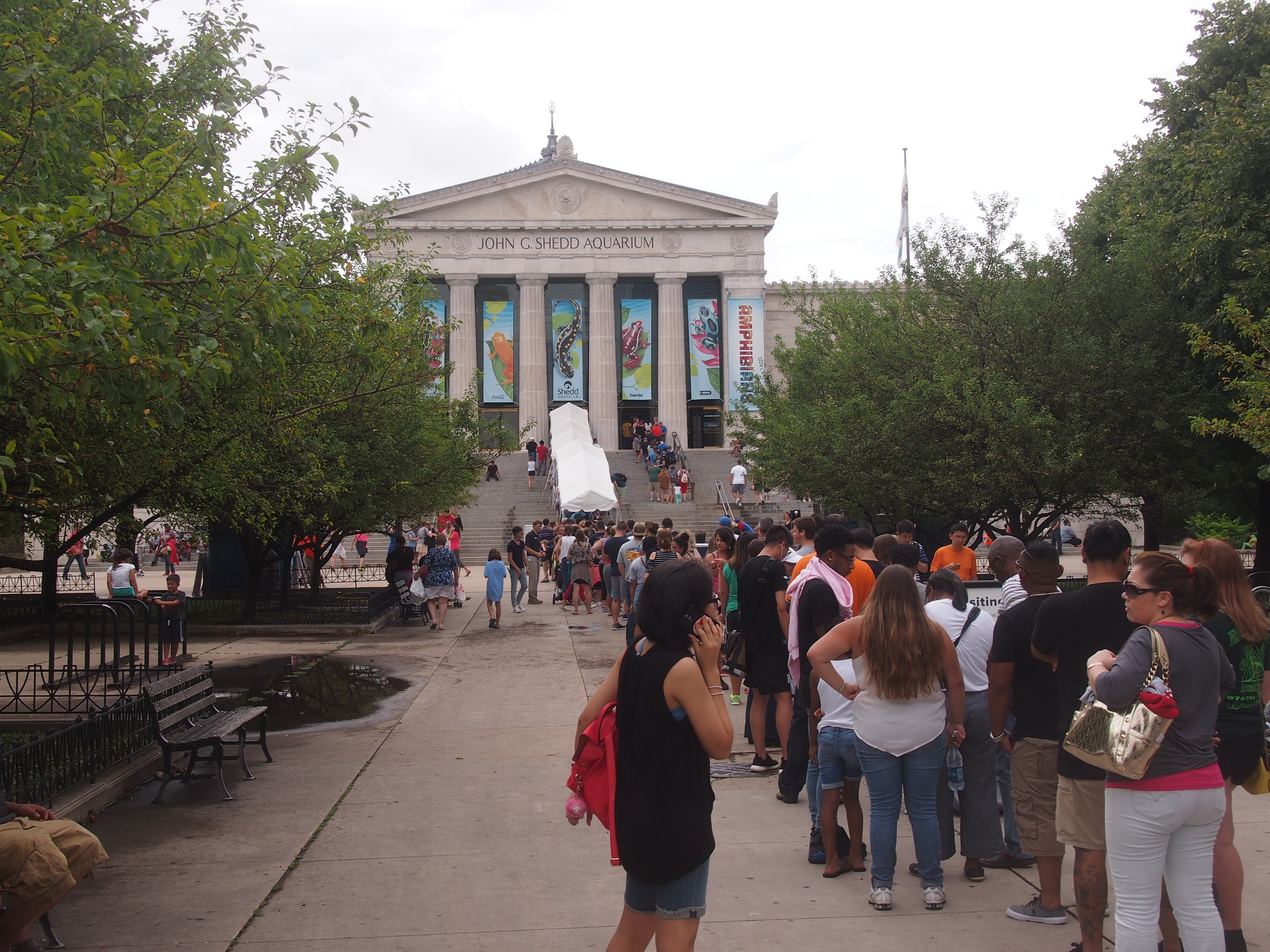 Wrong.
Wrong.
